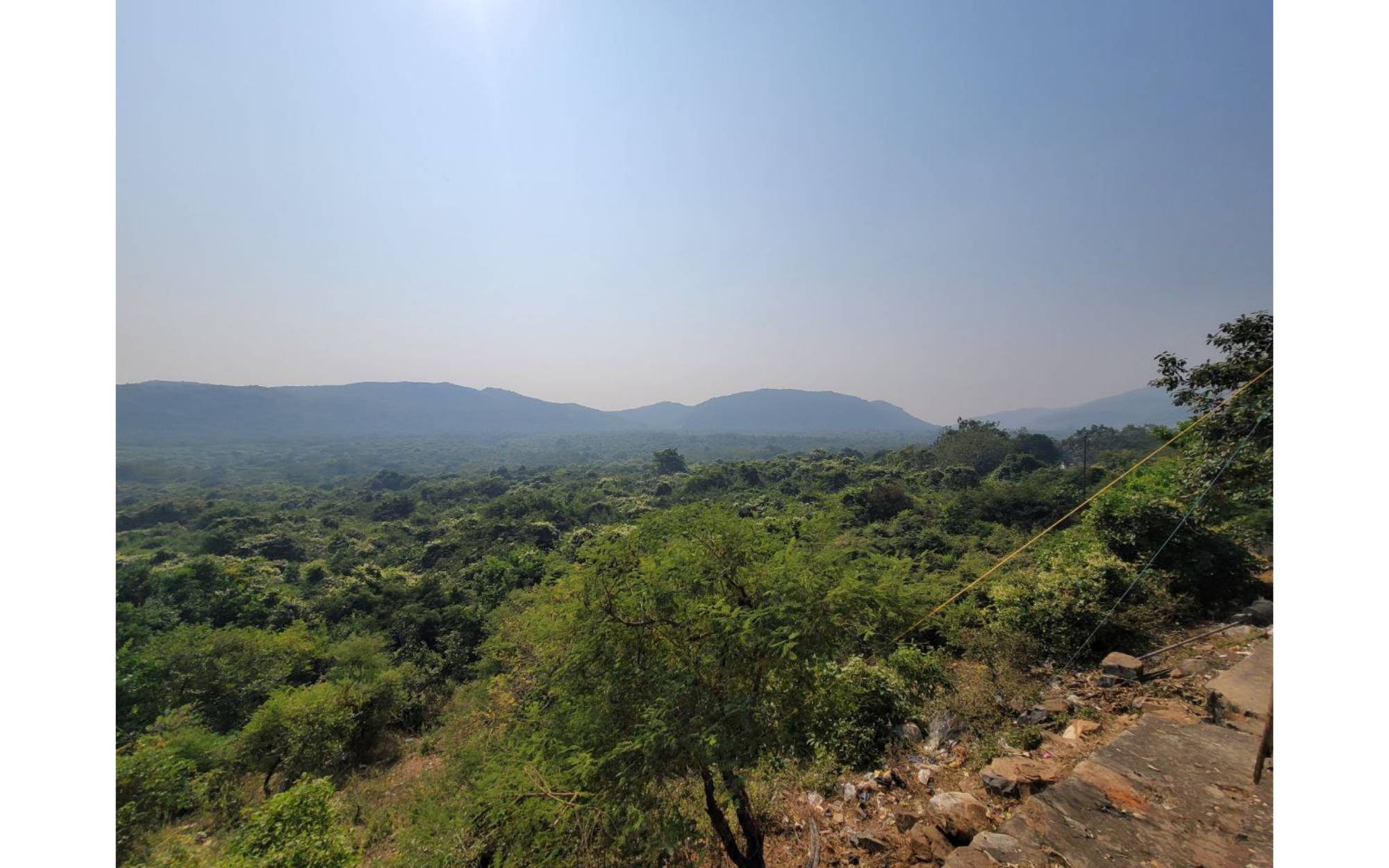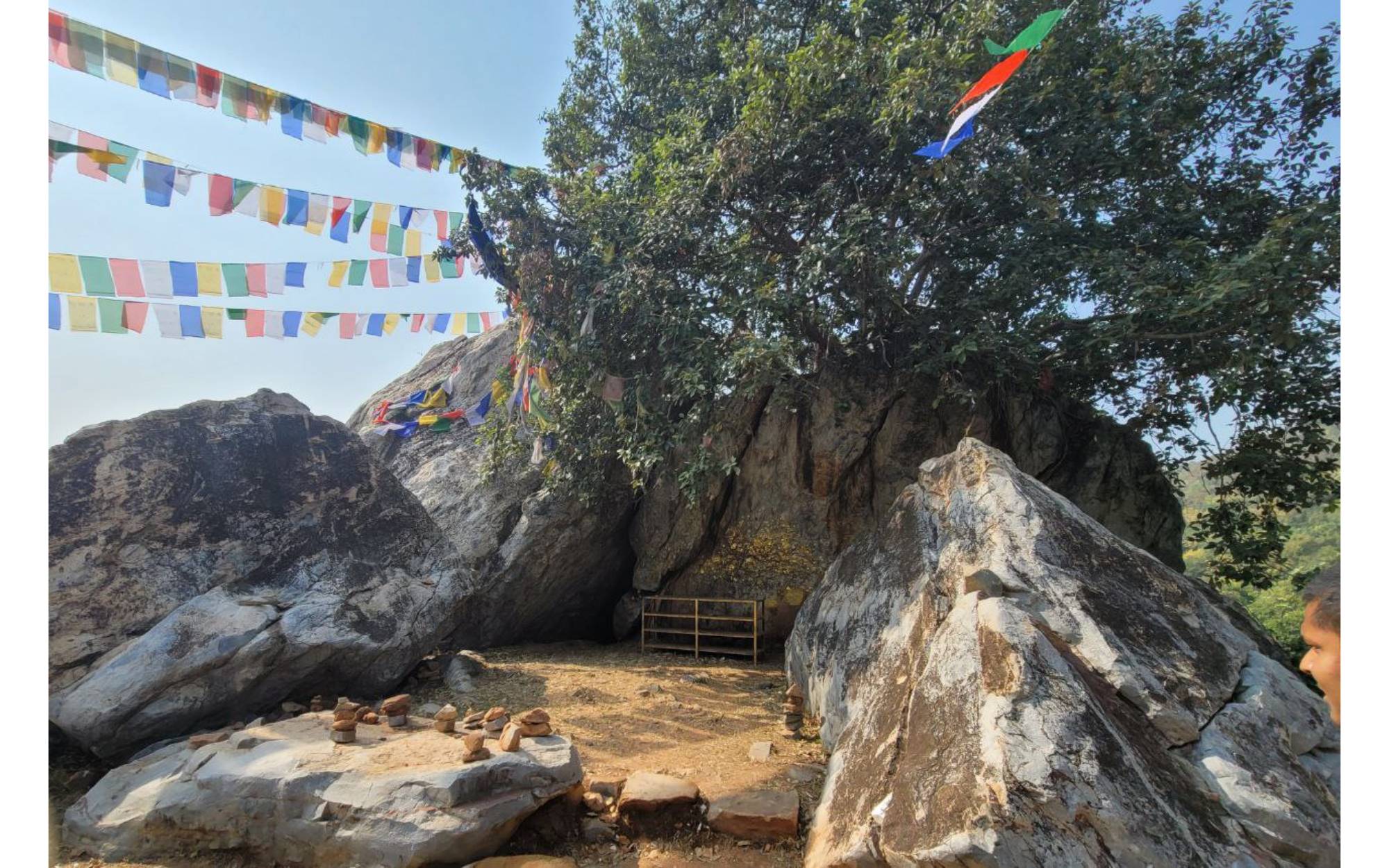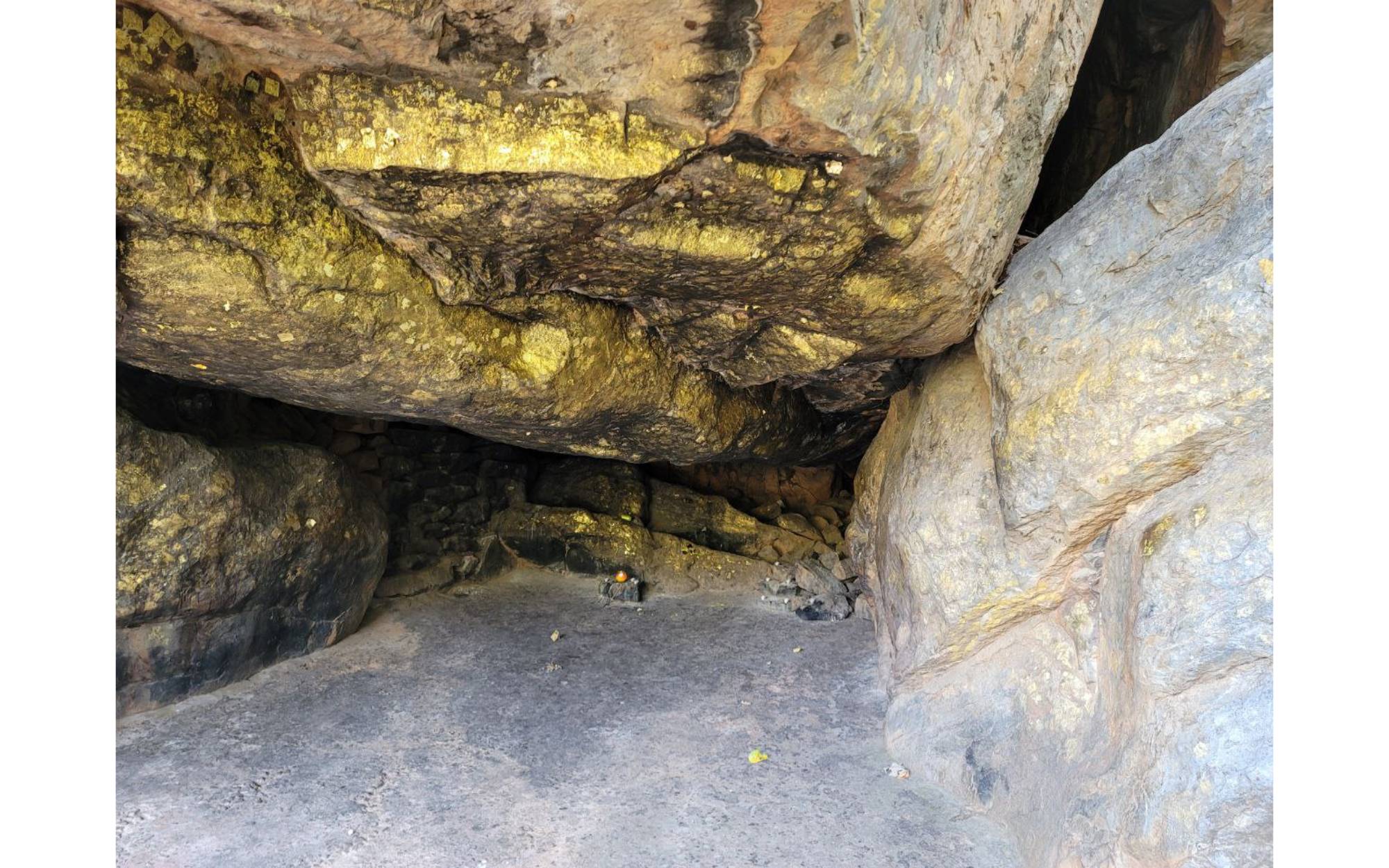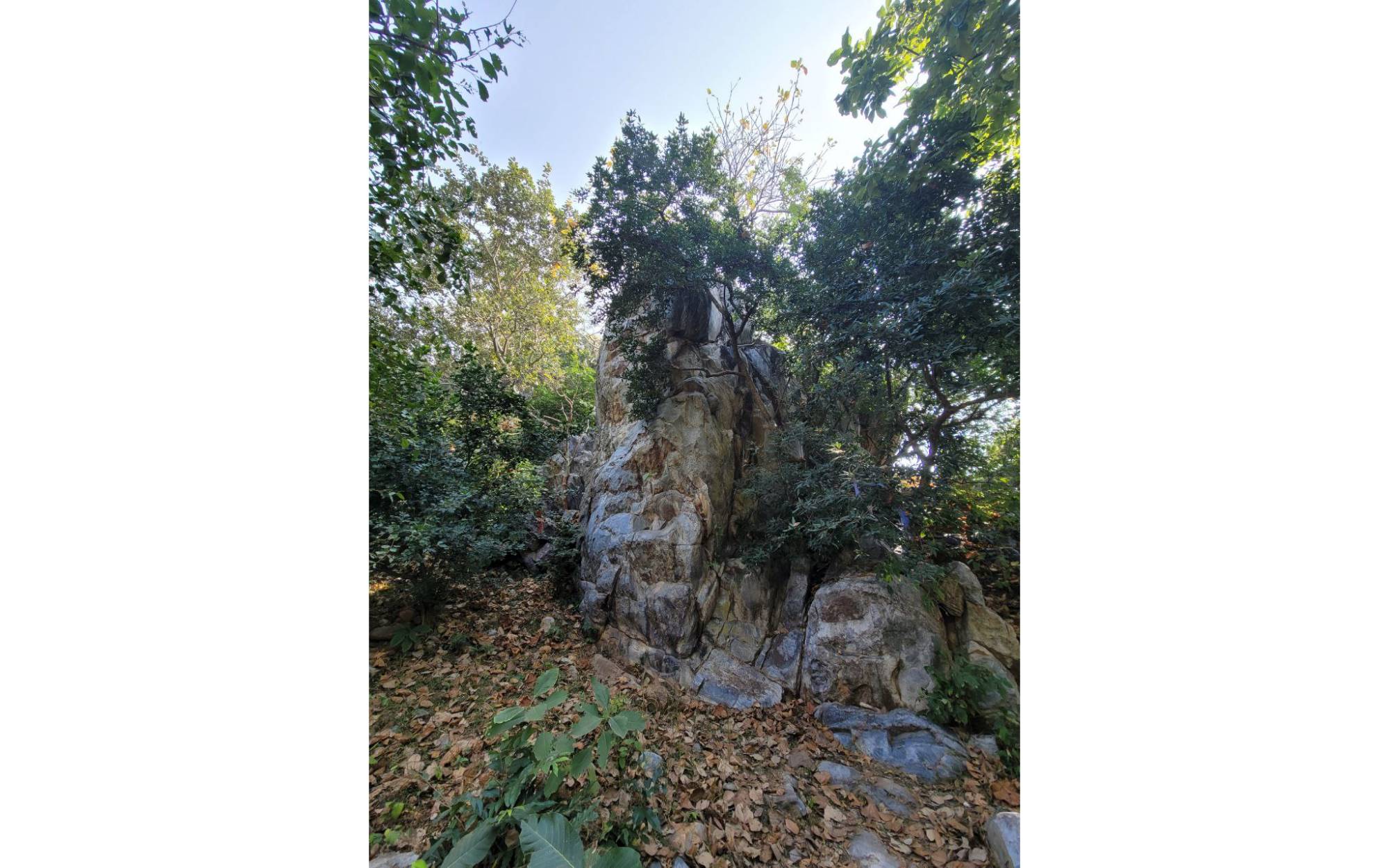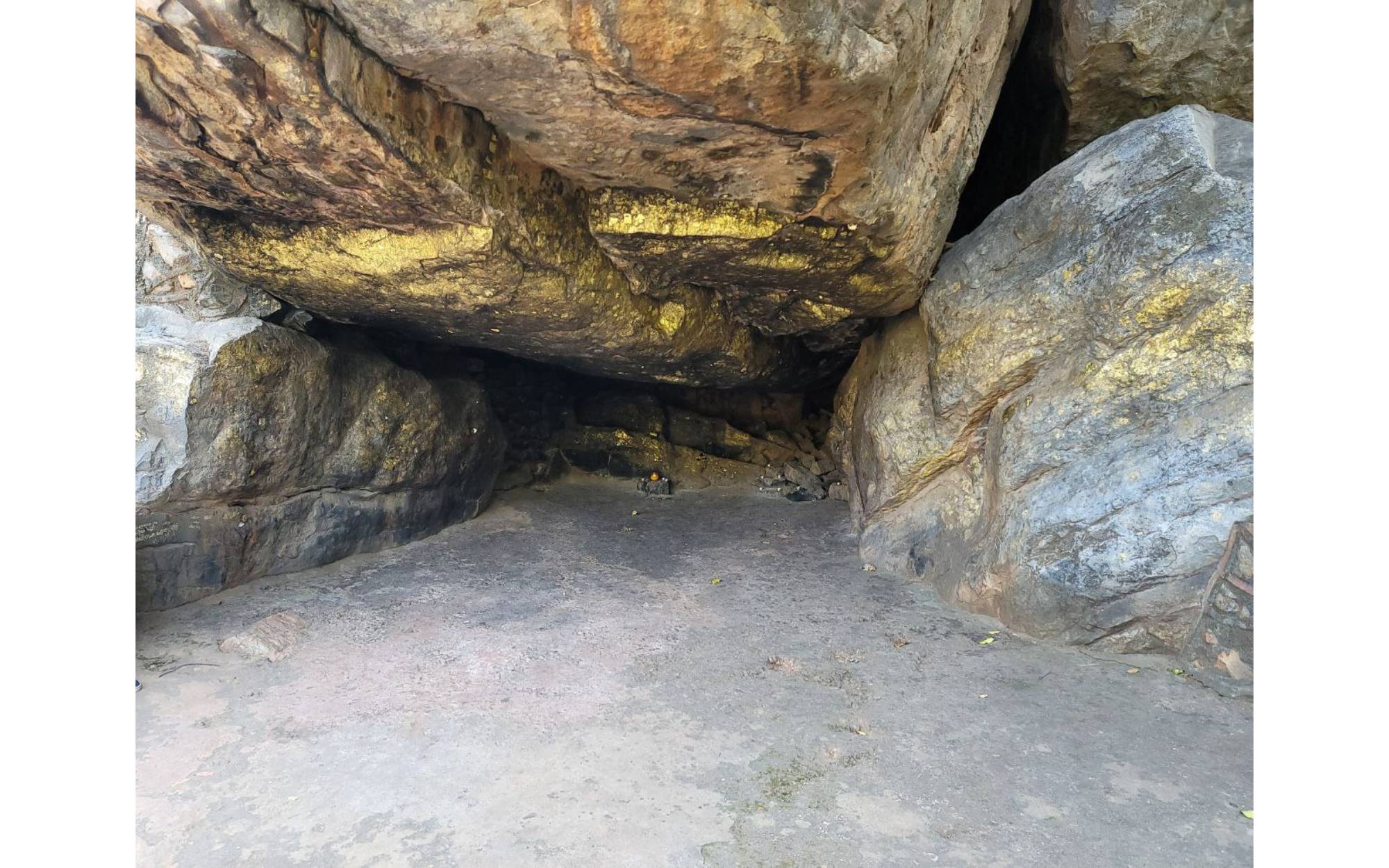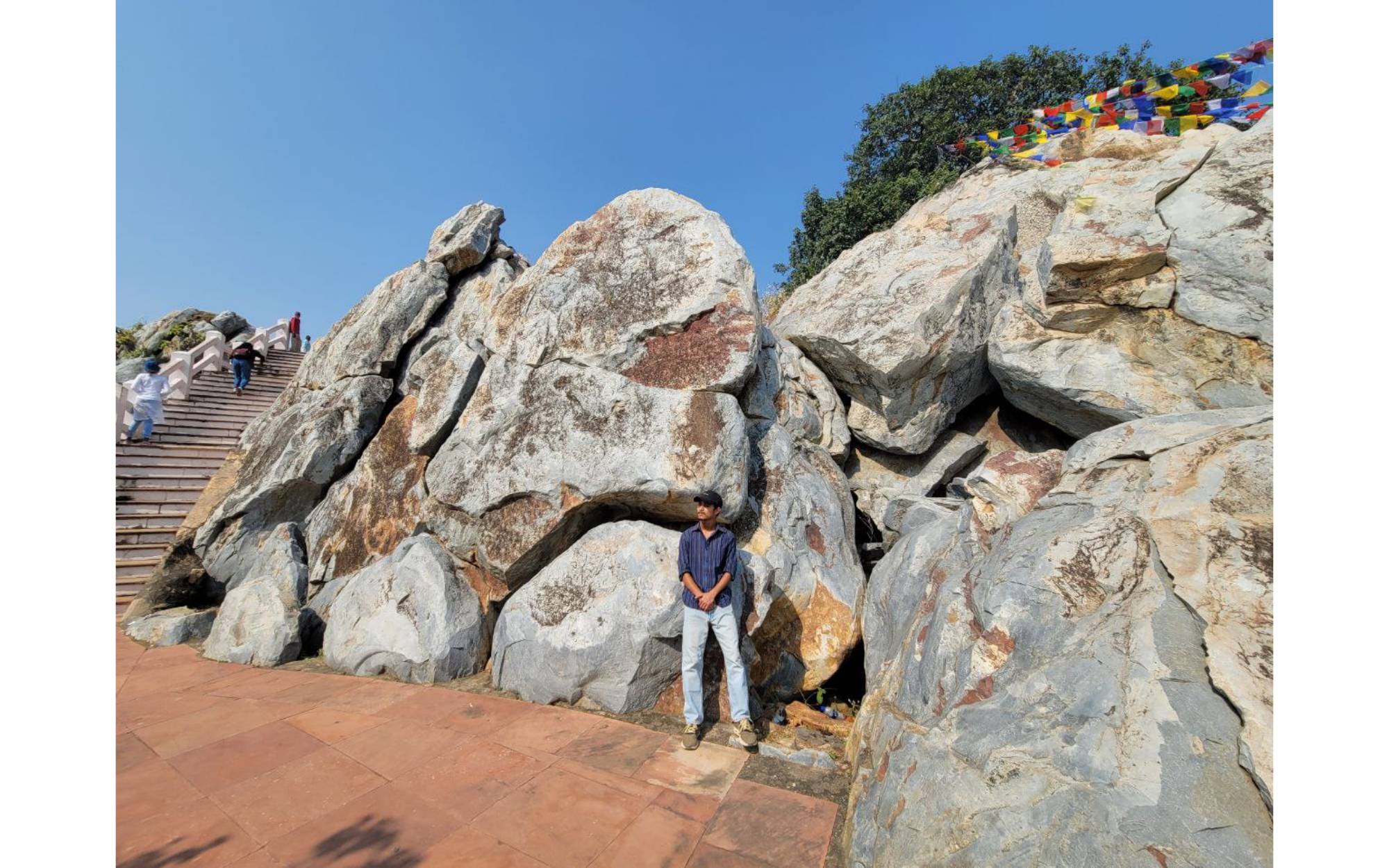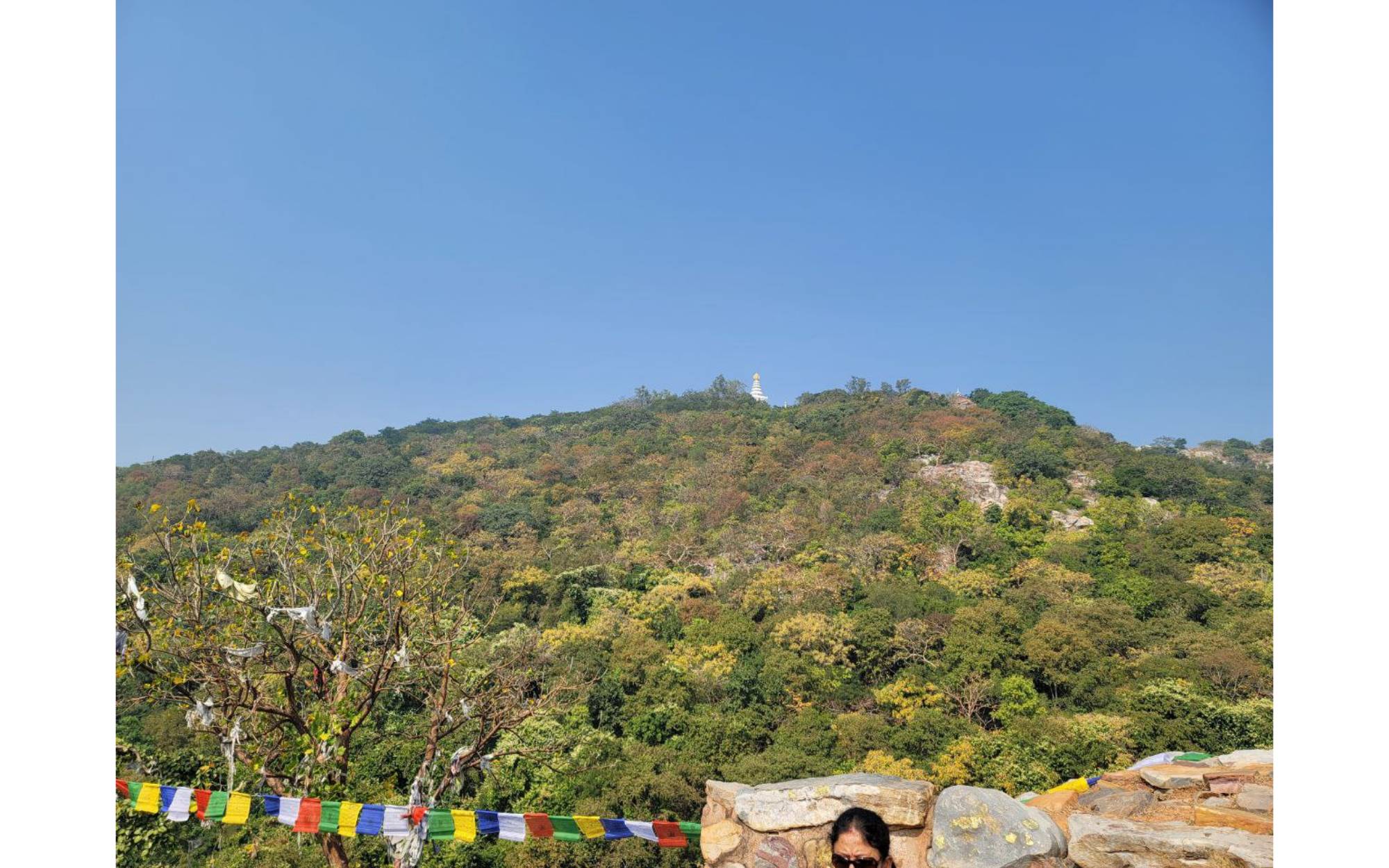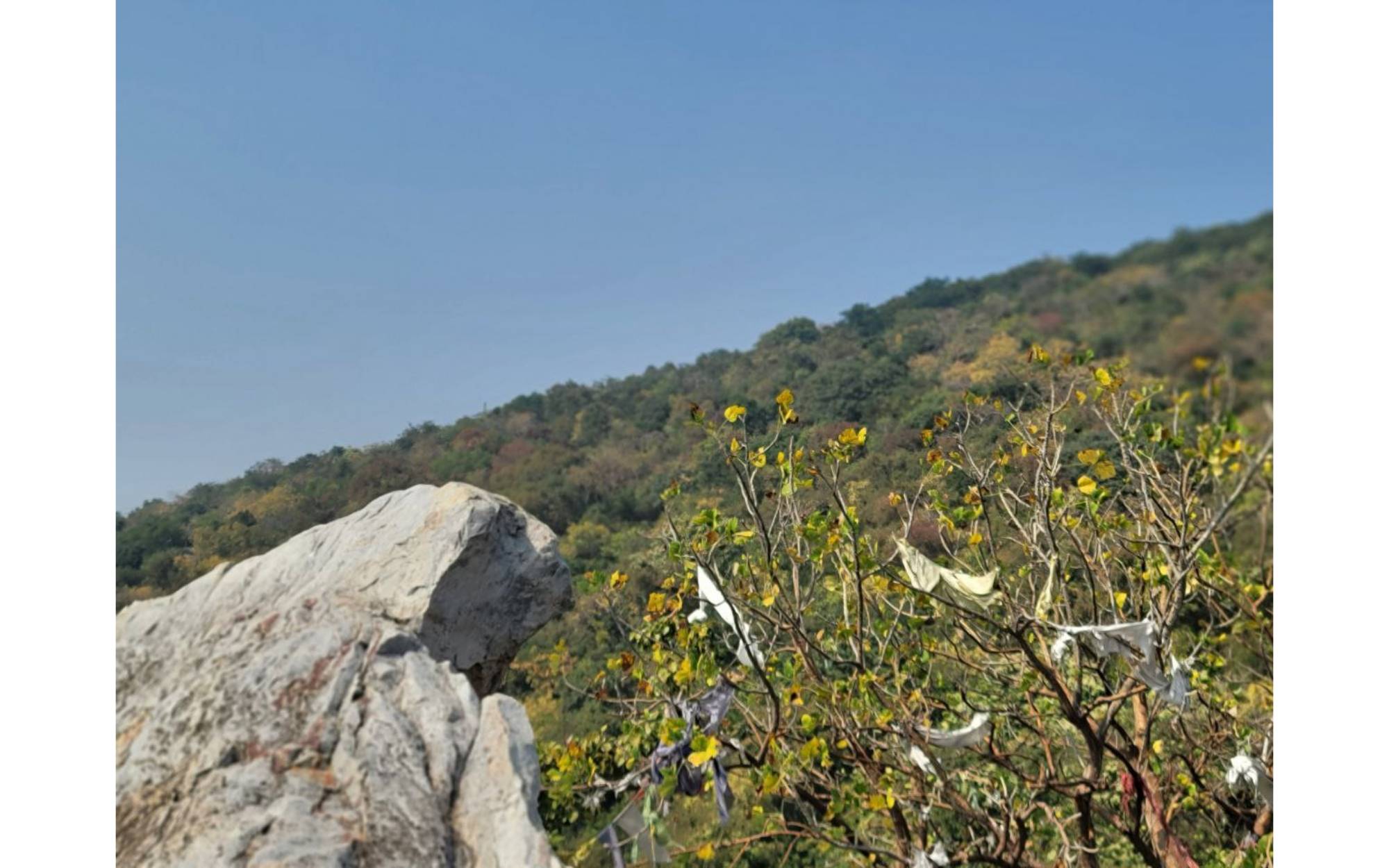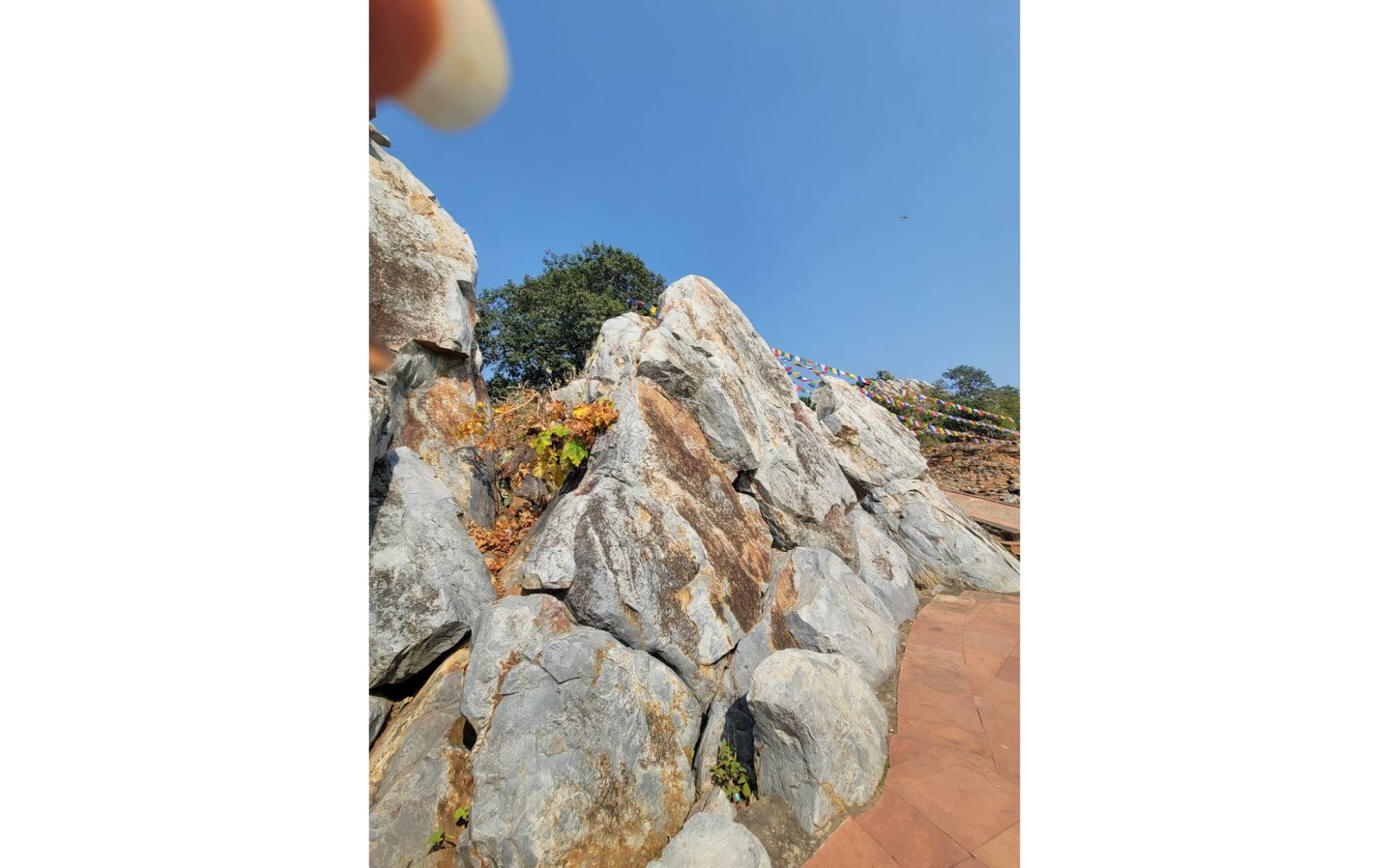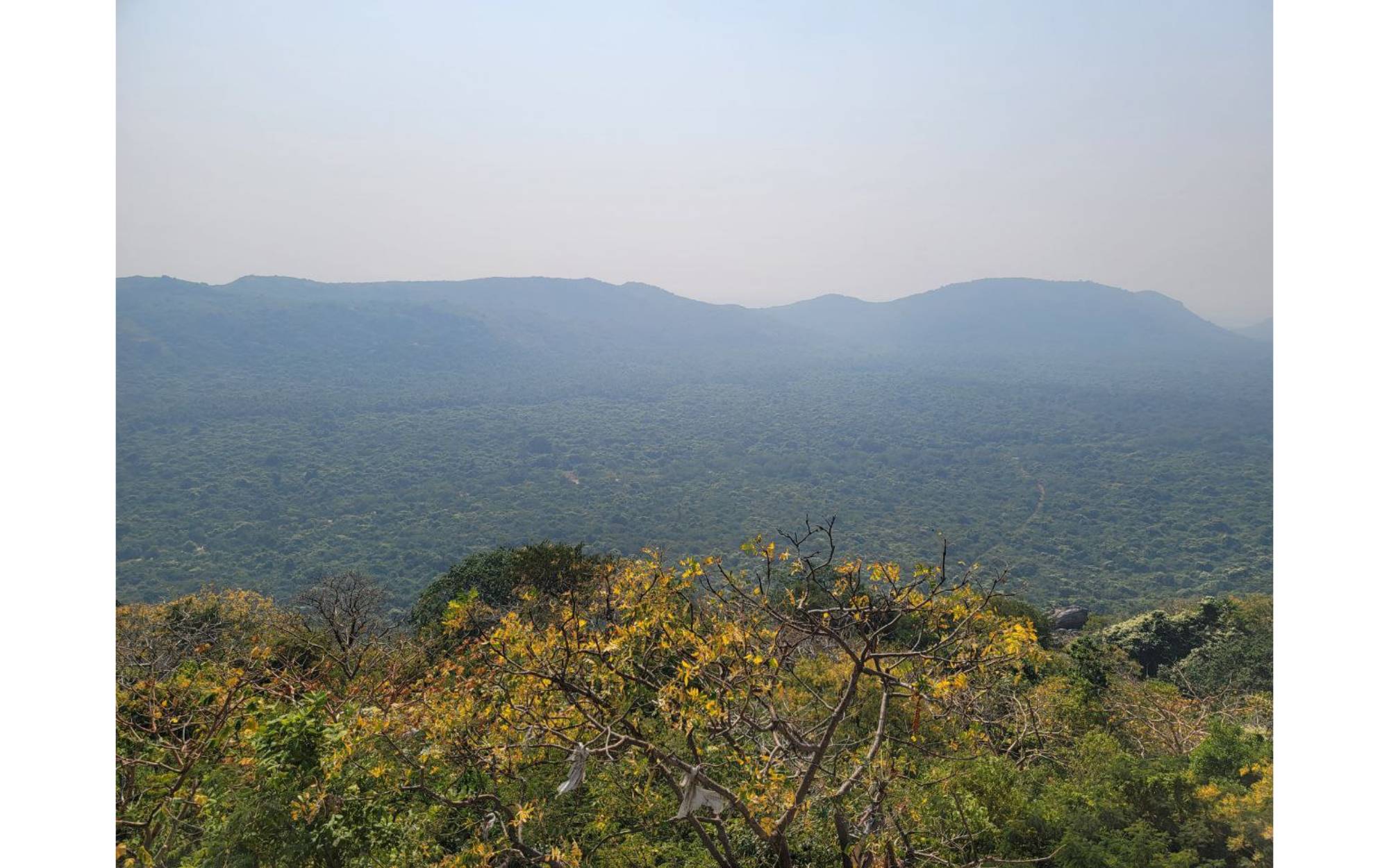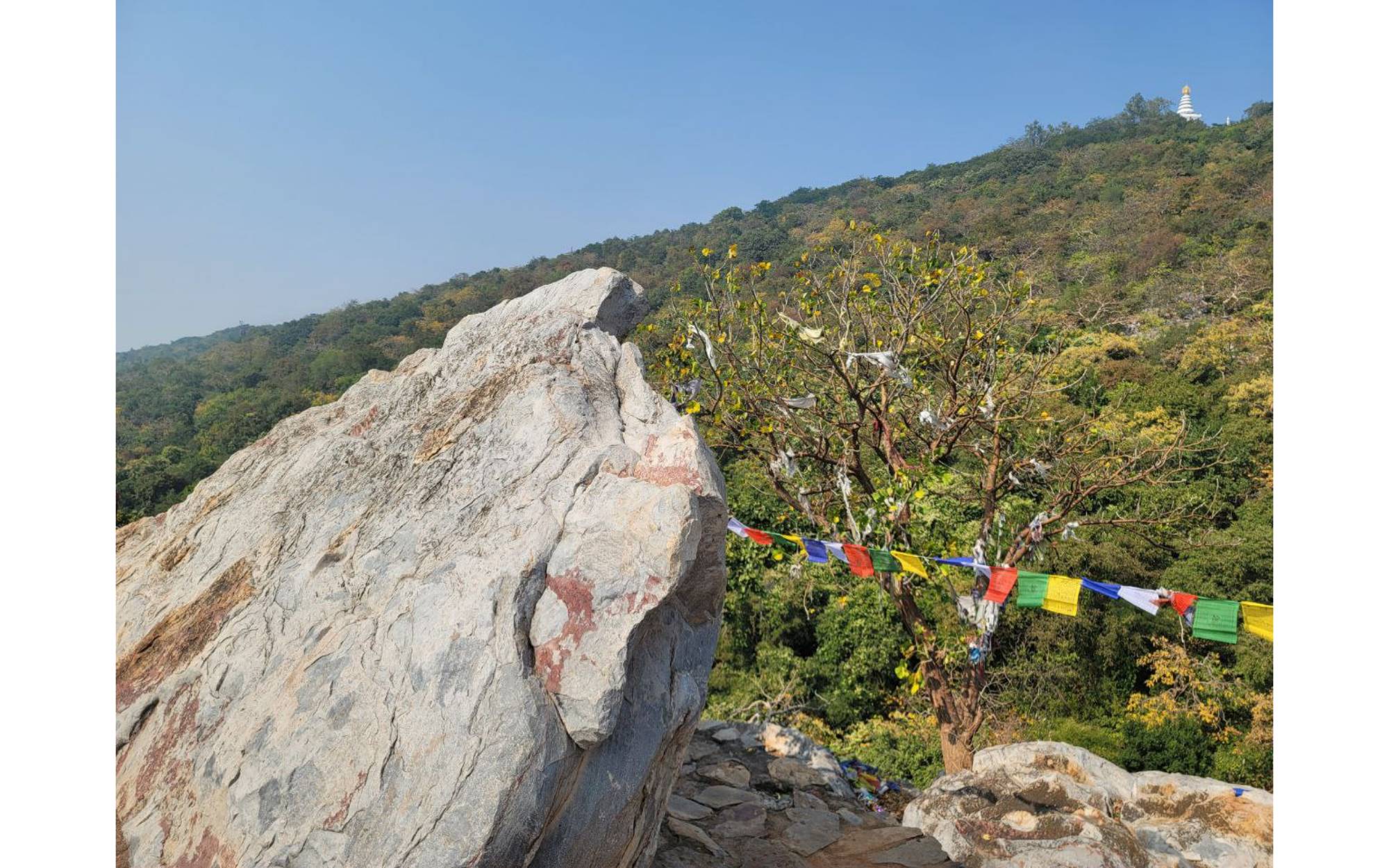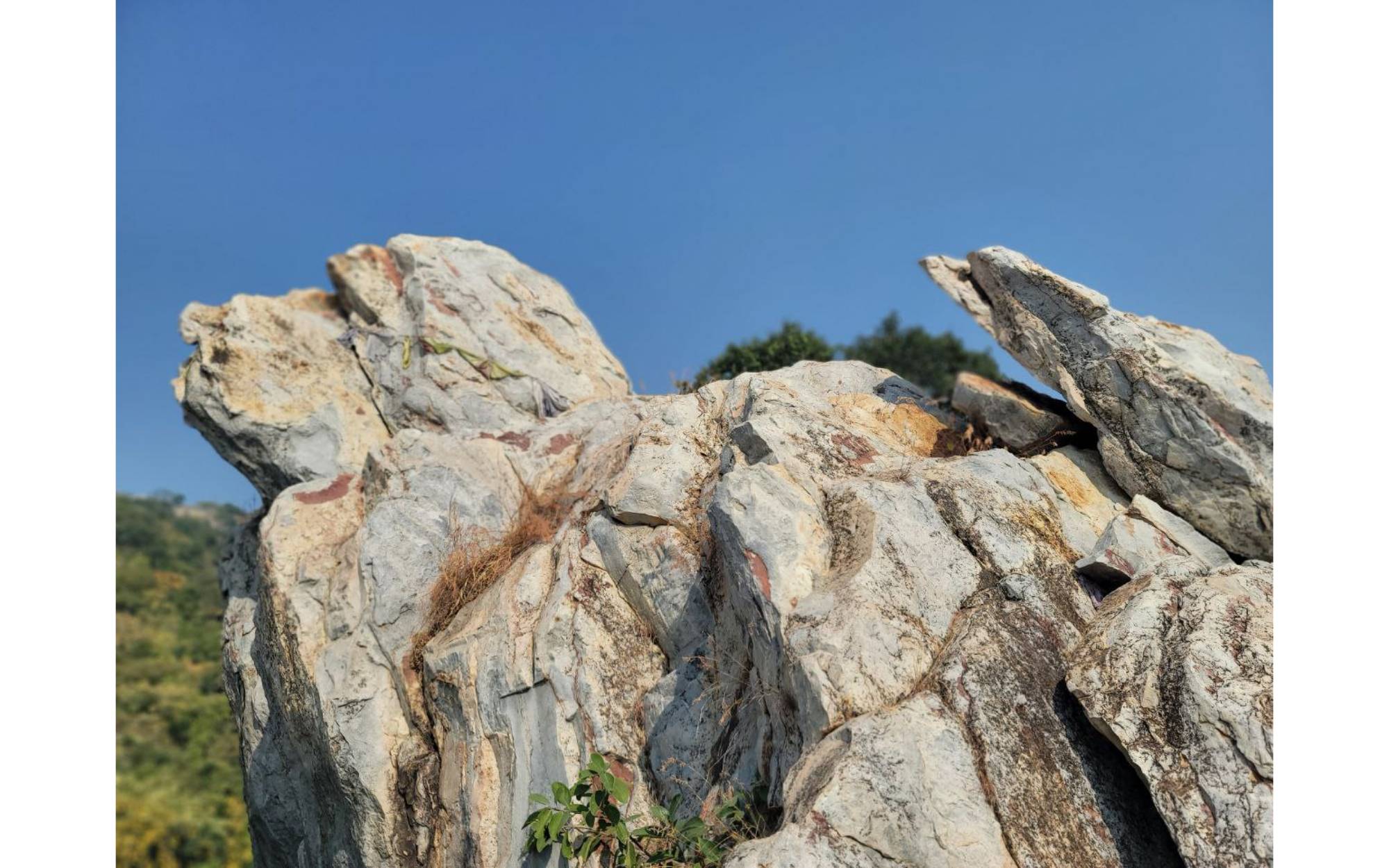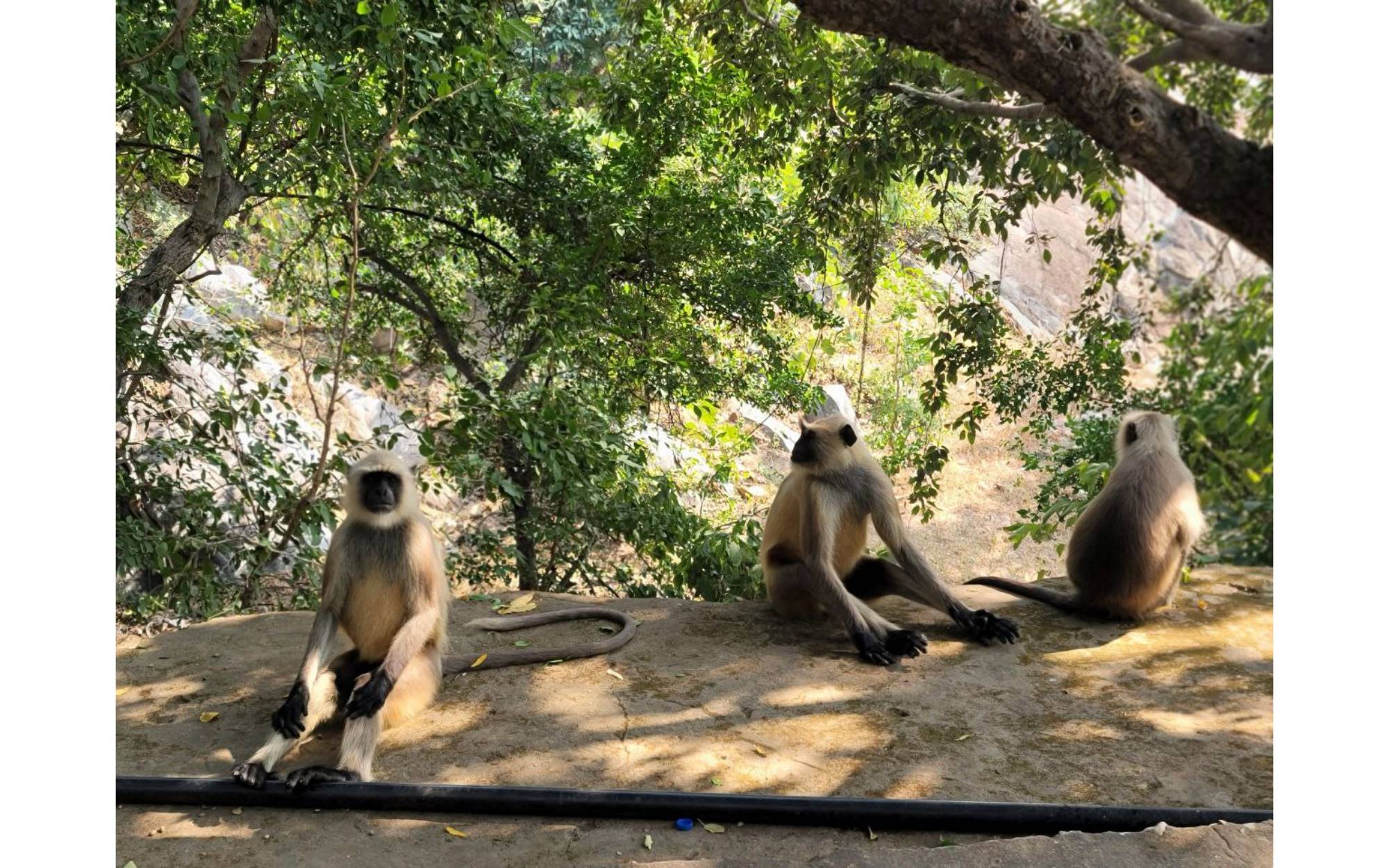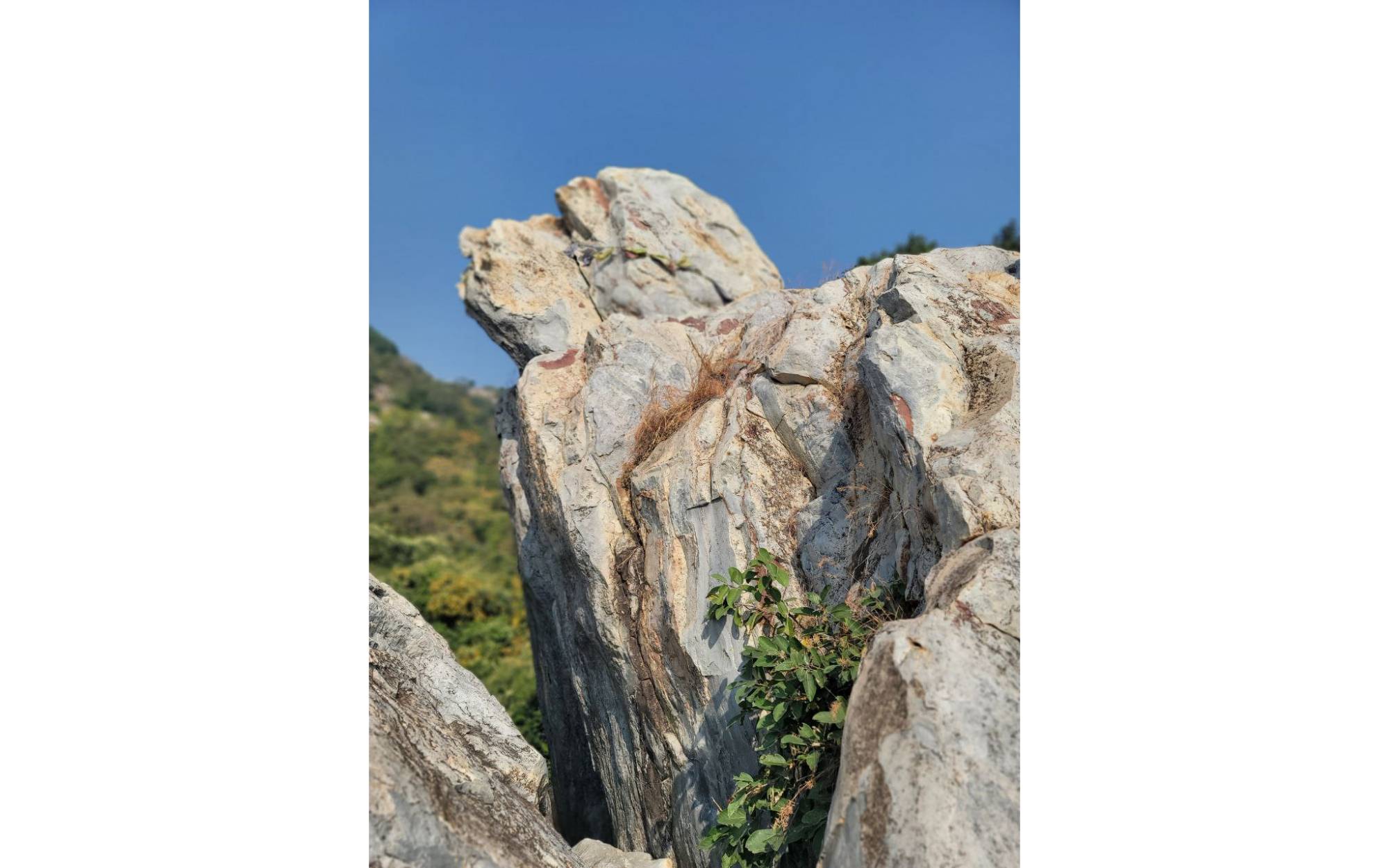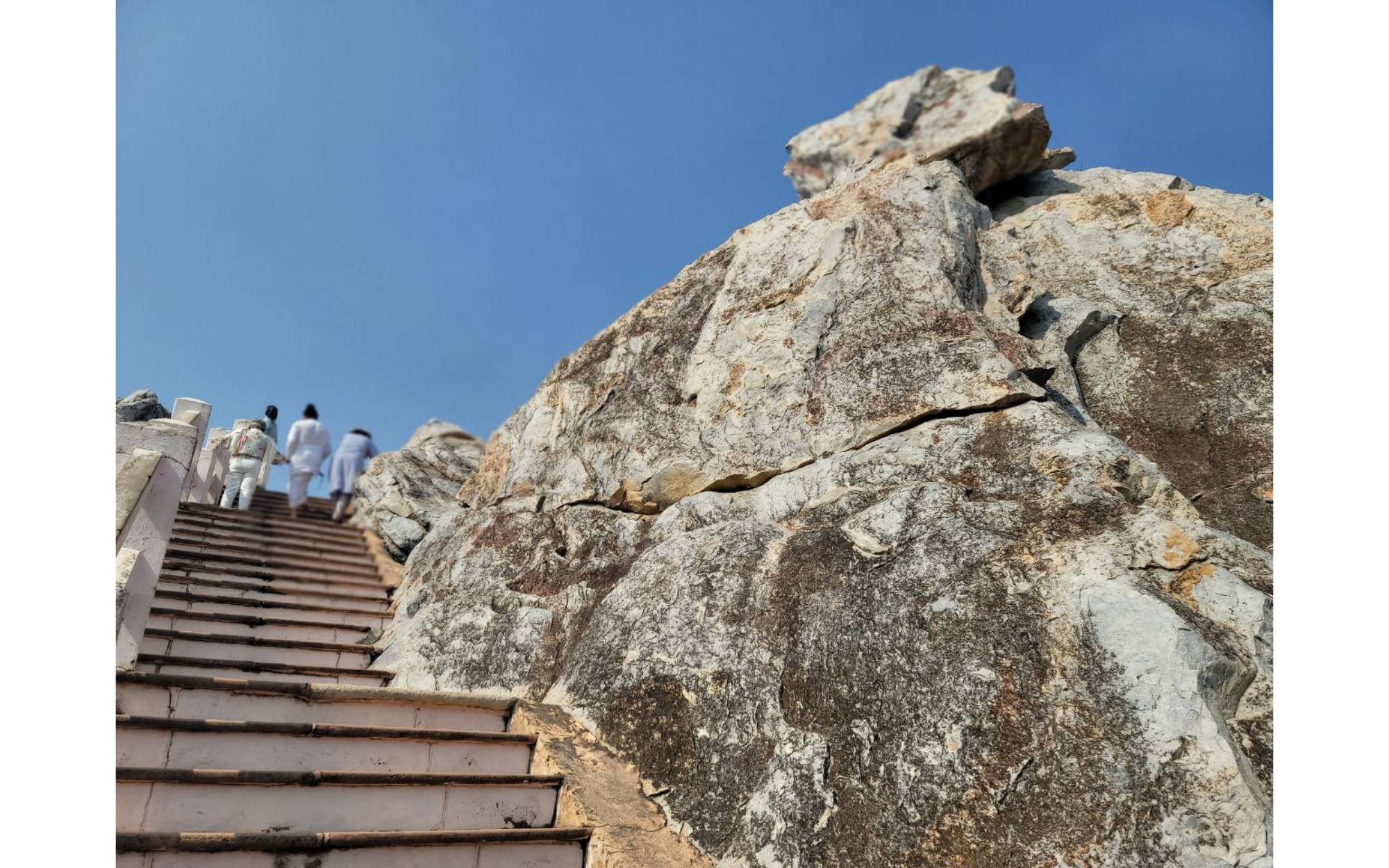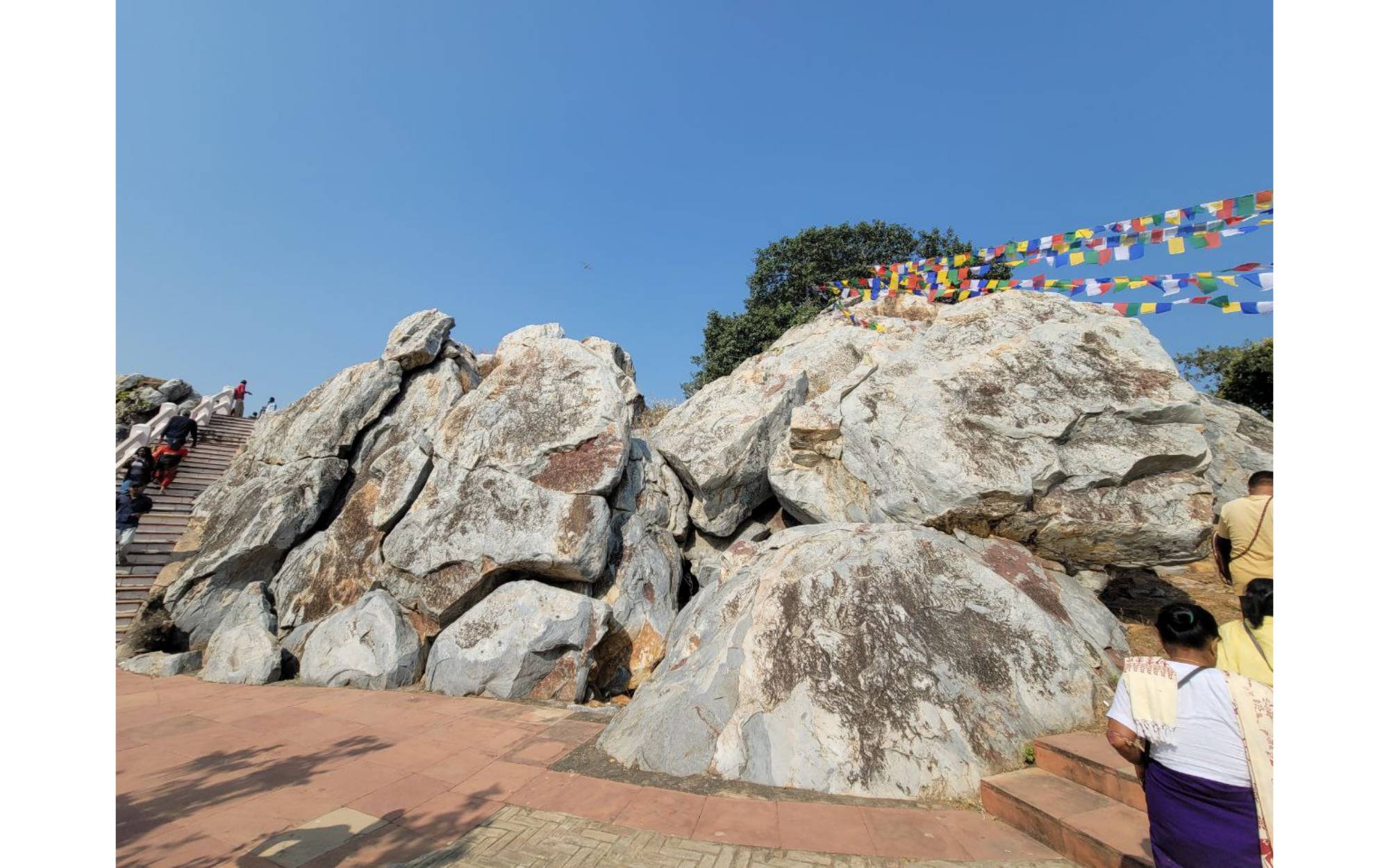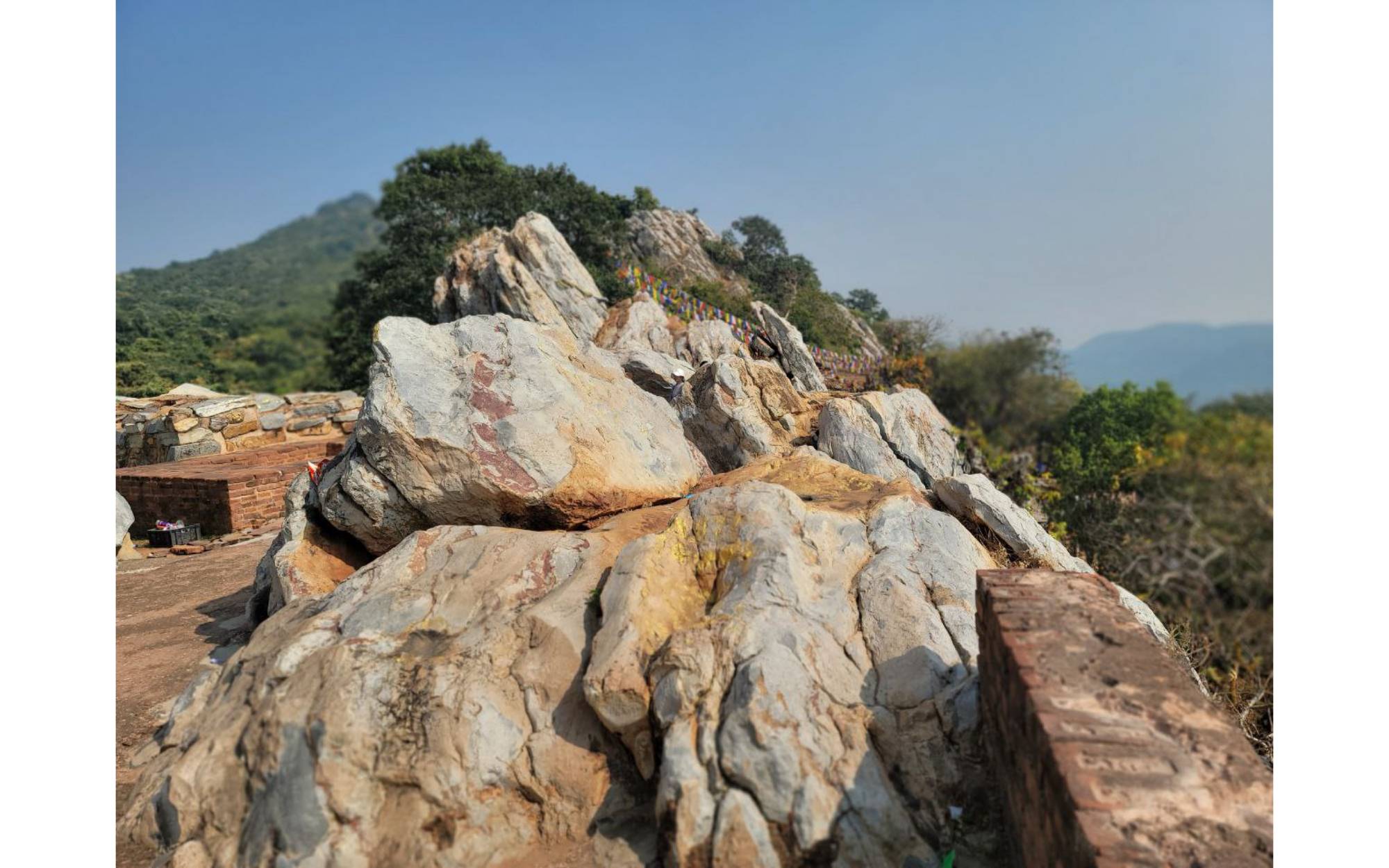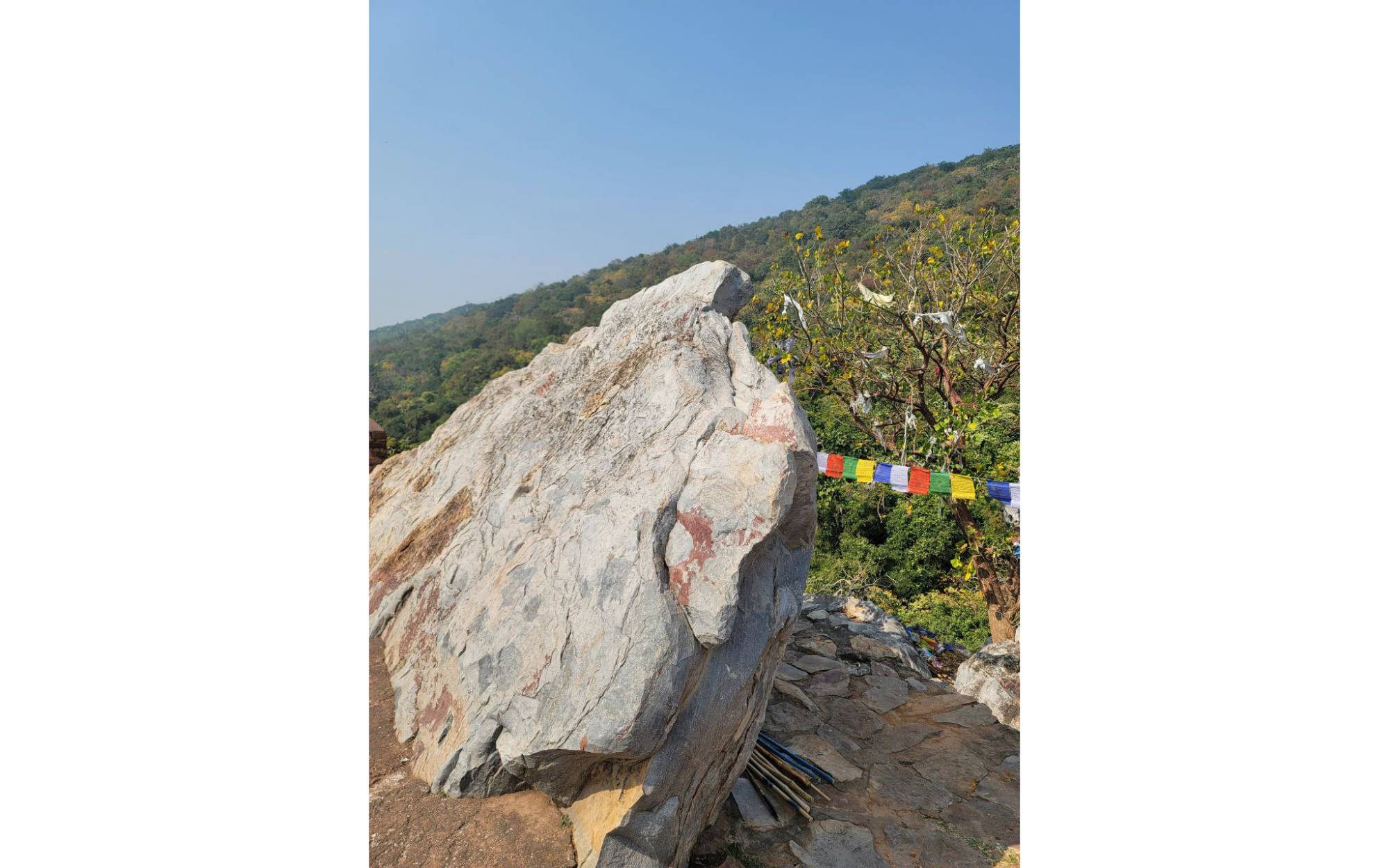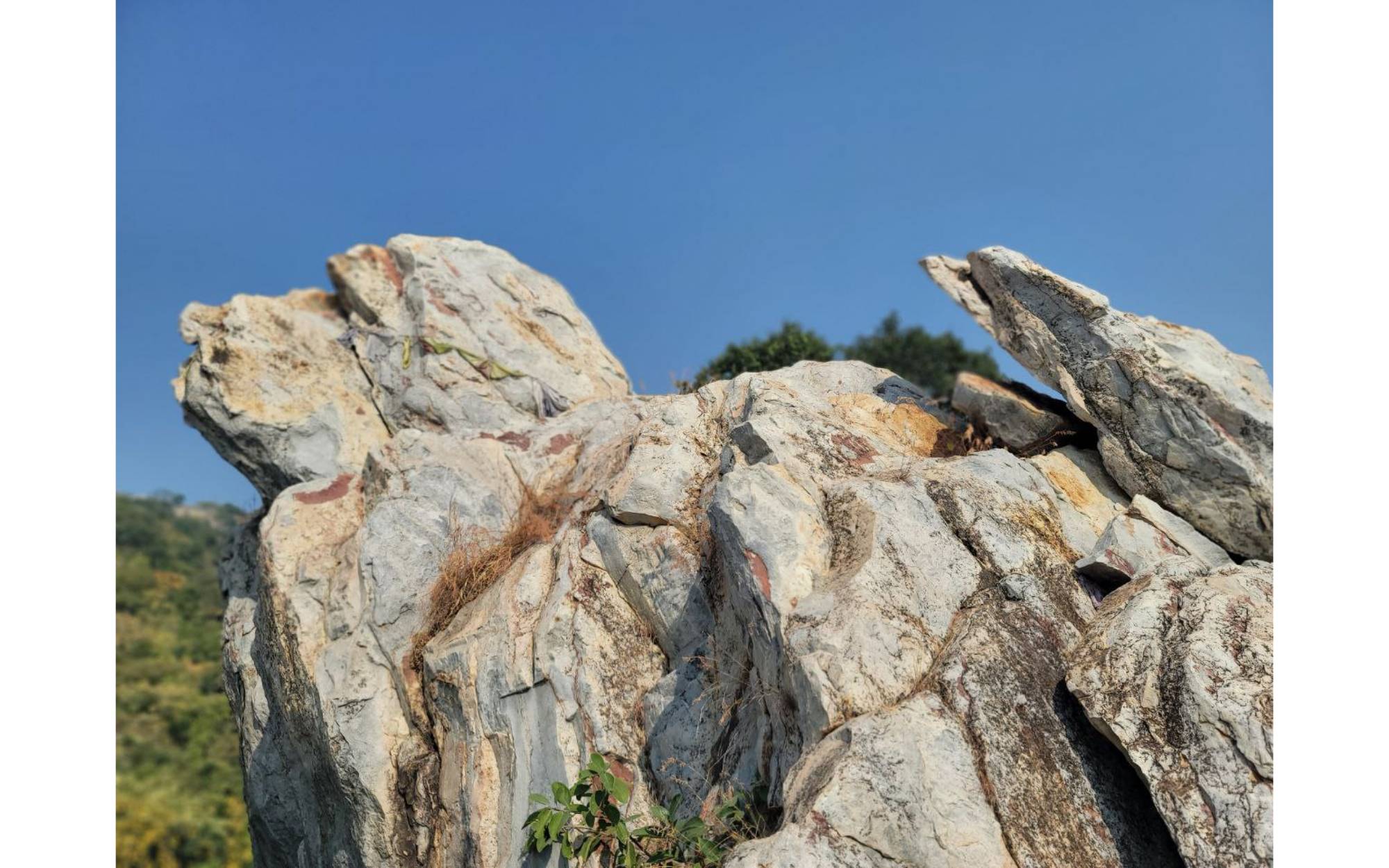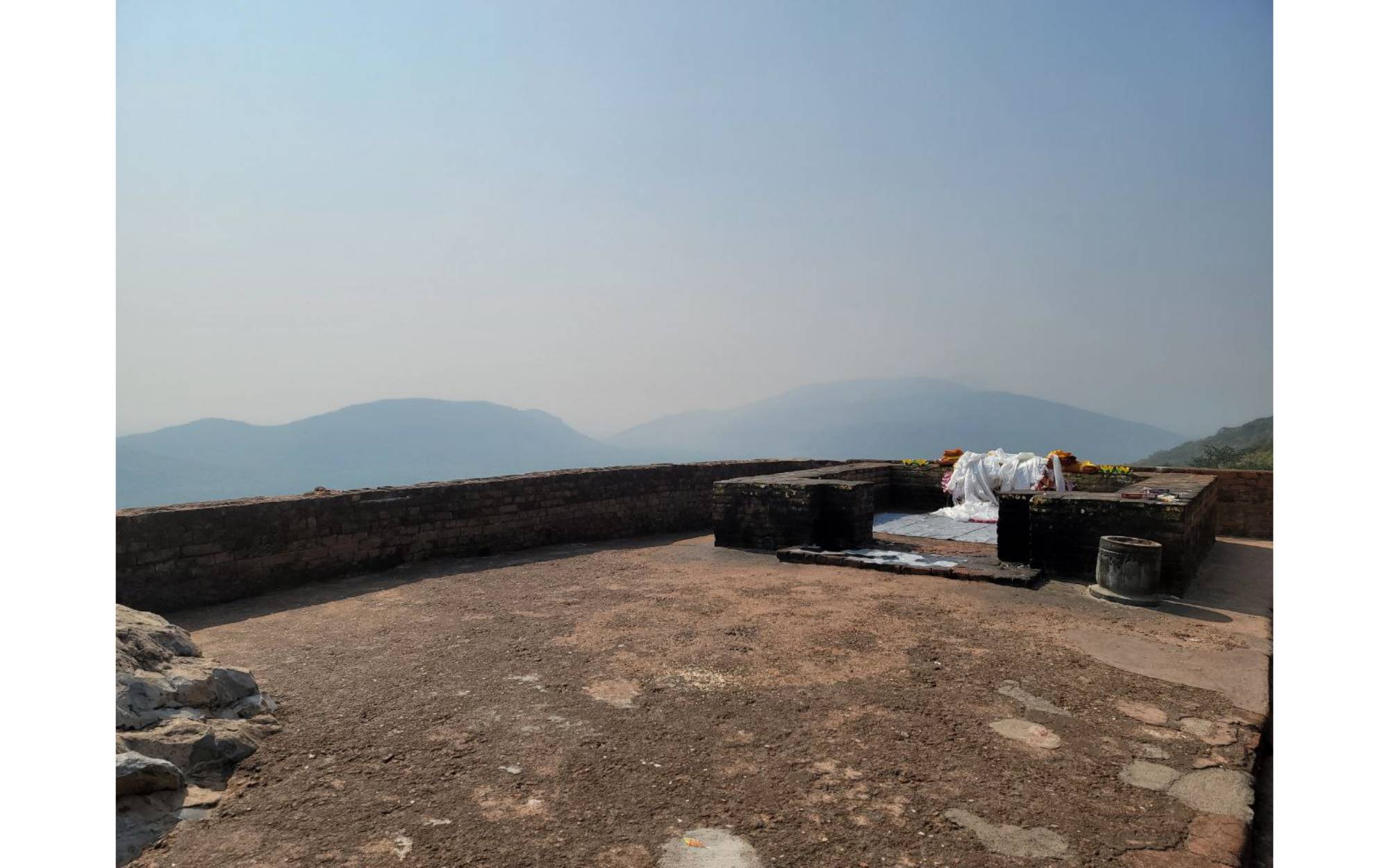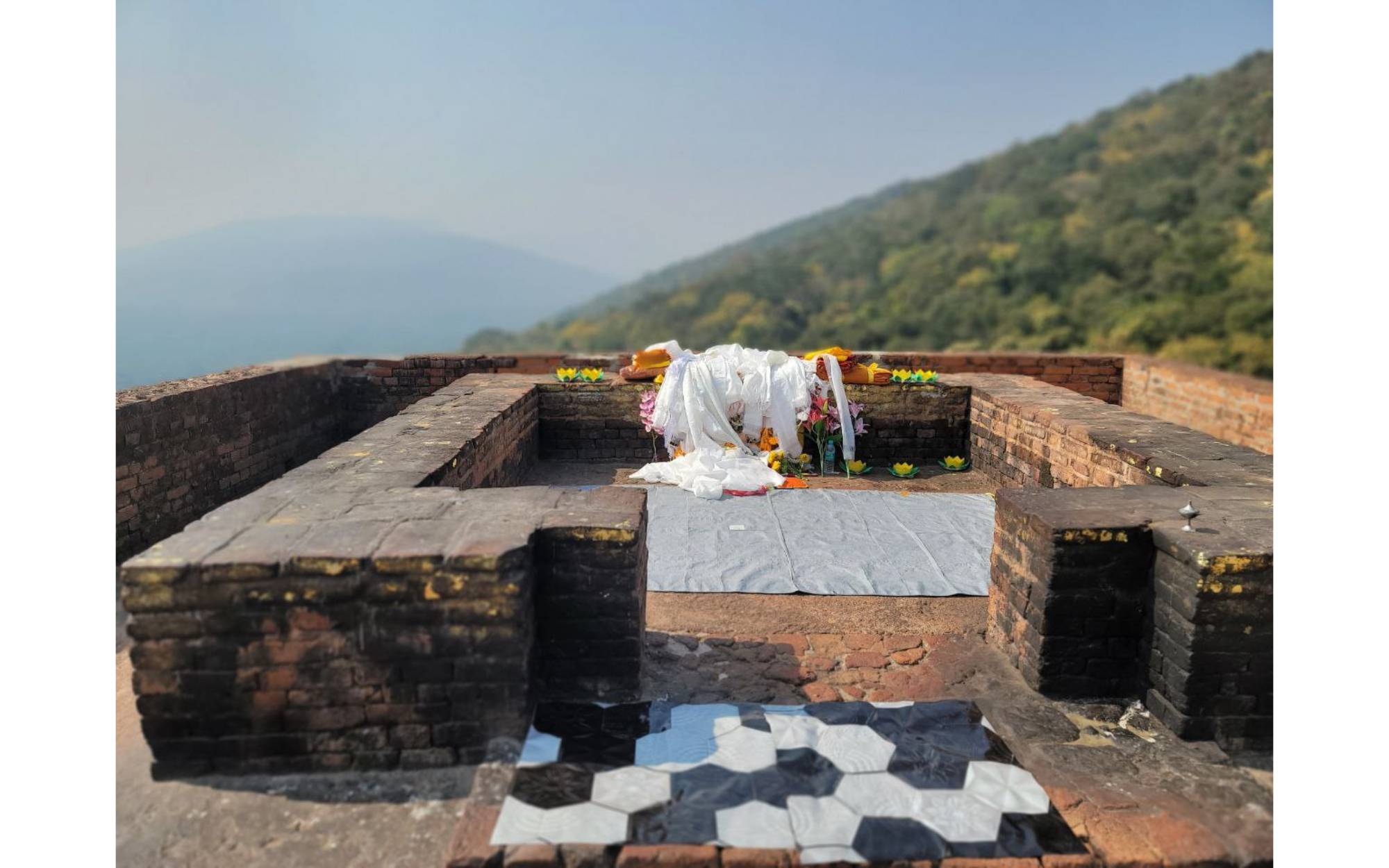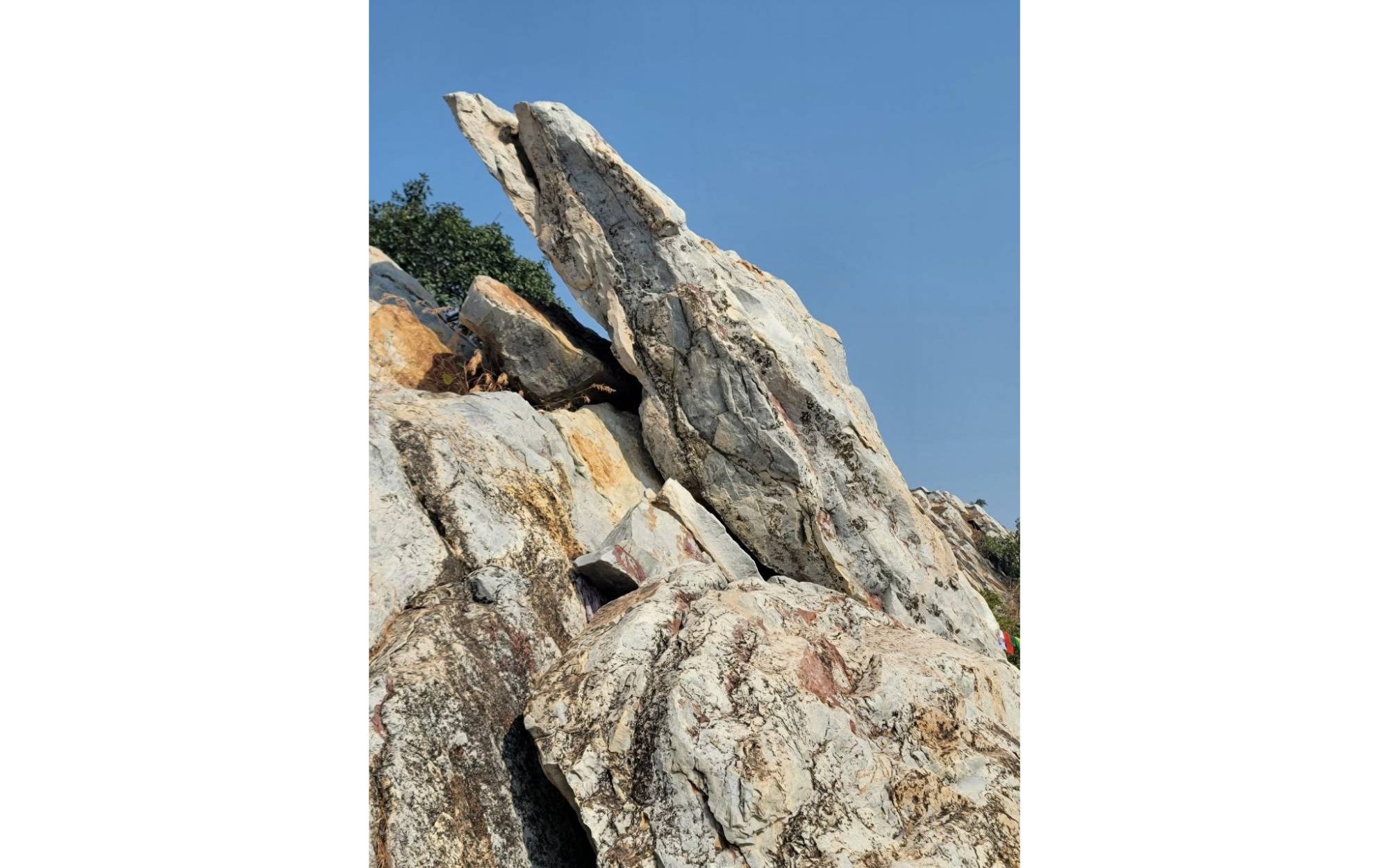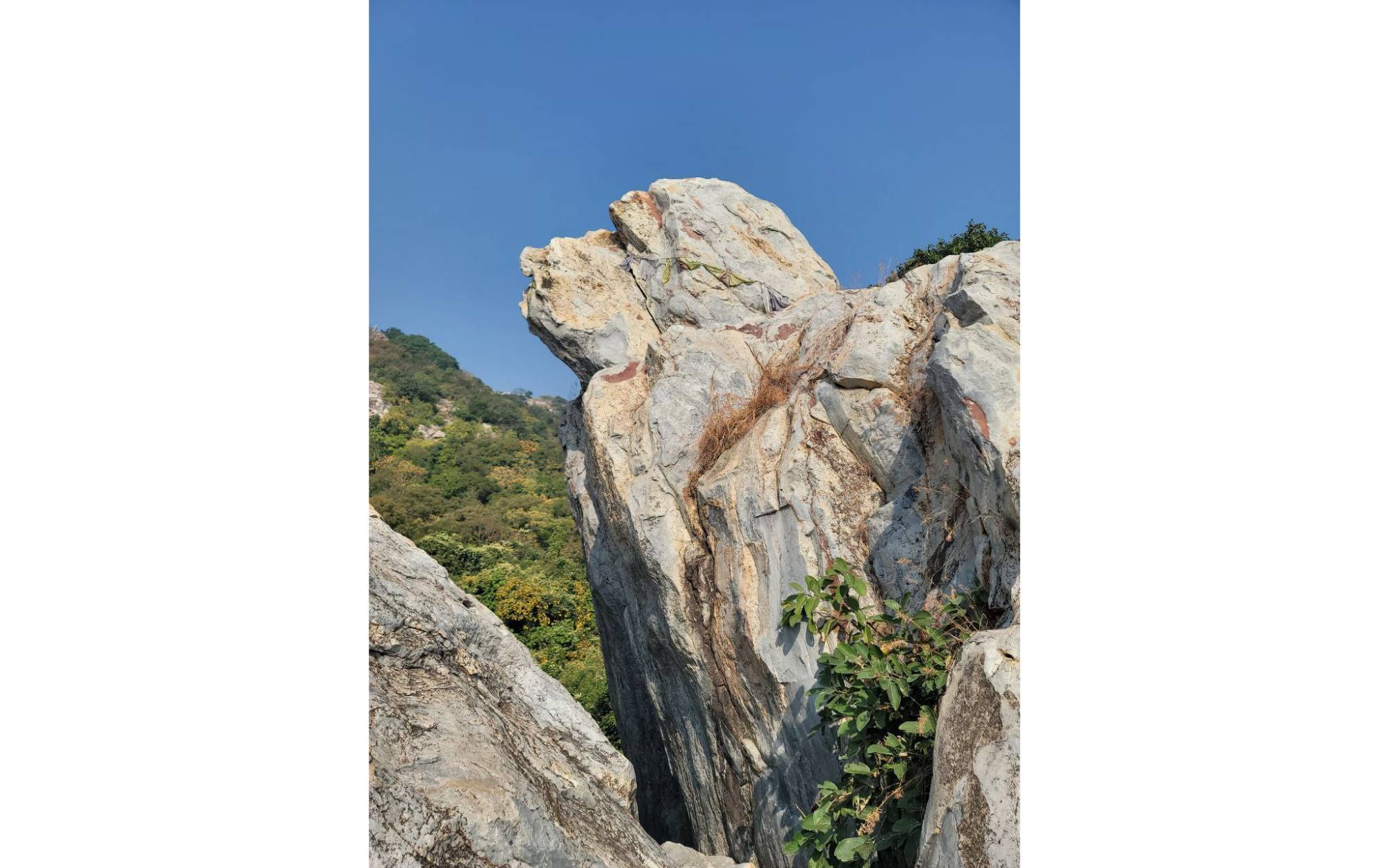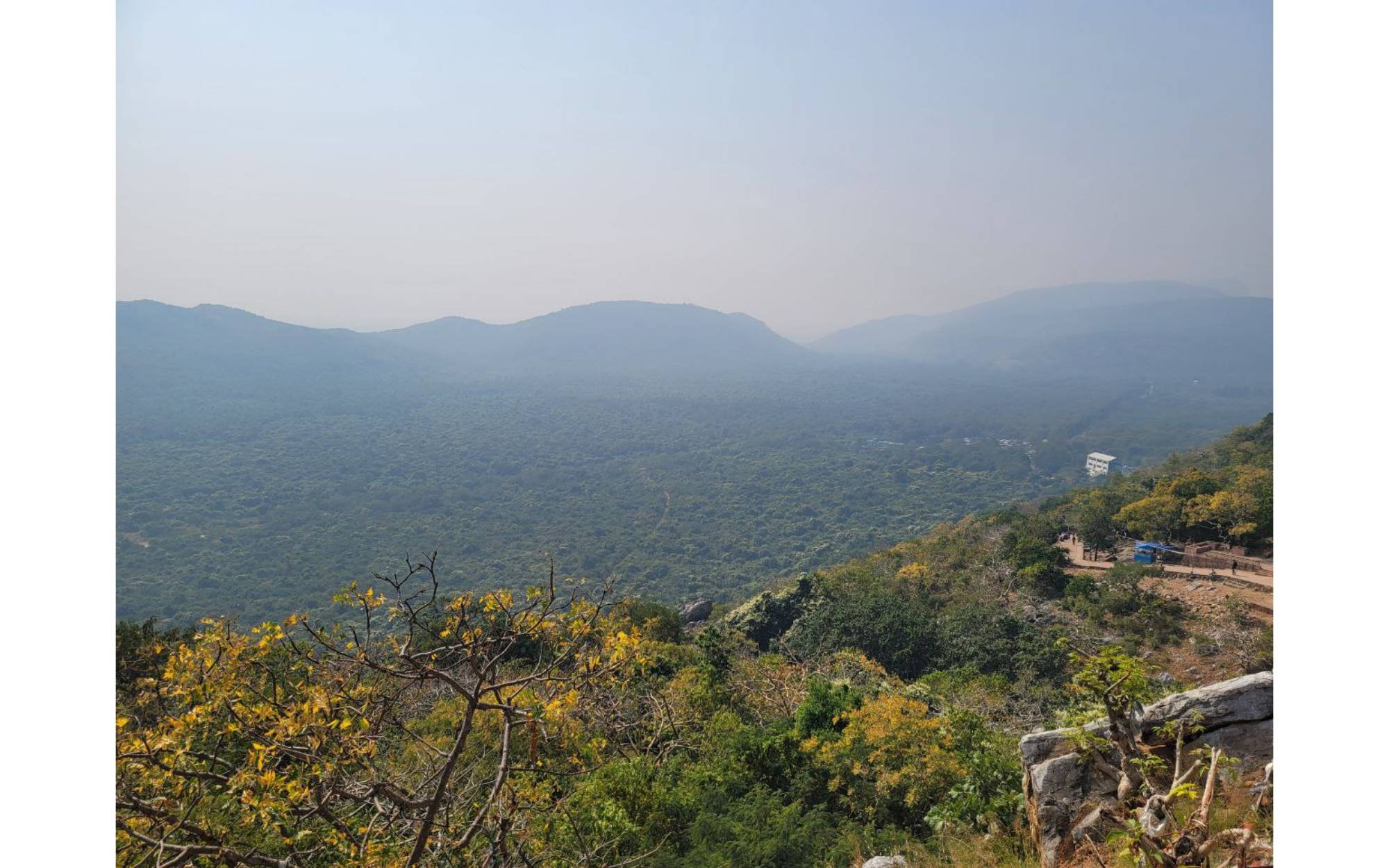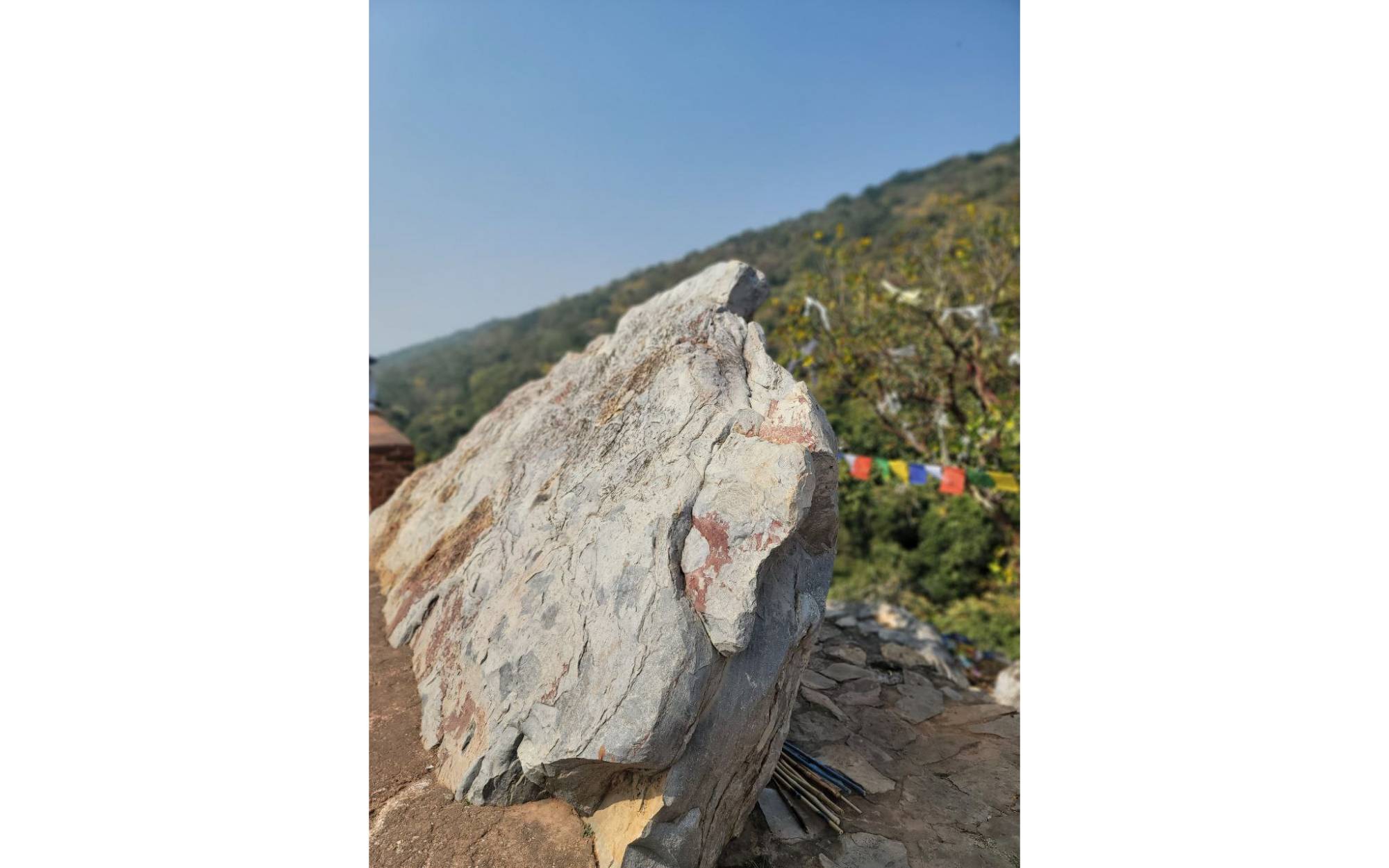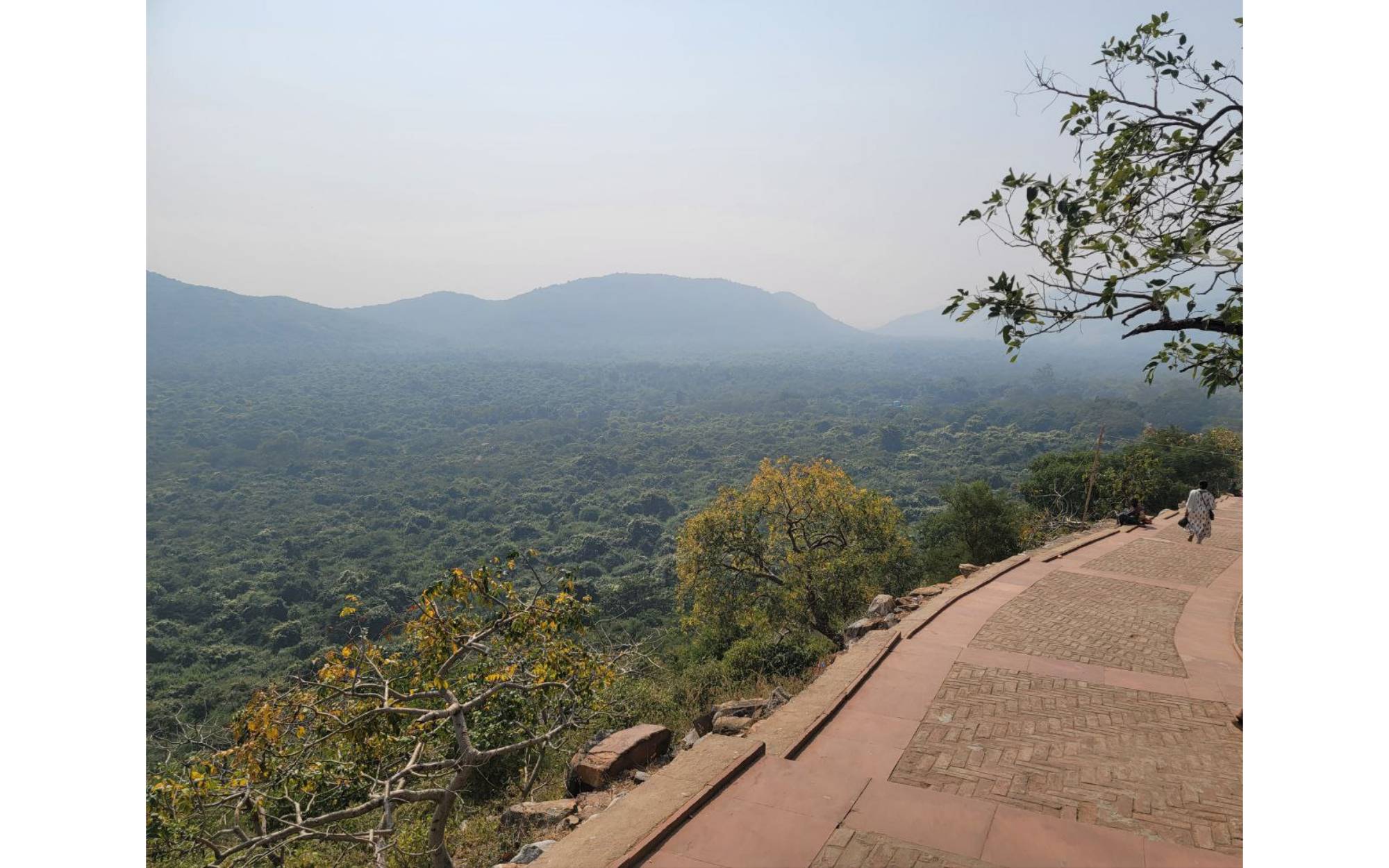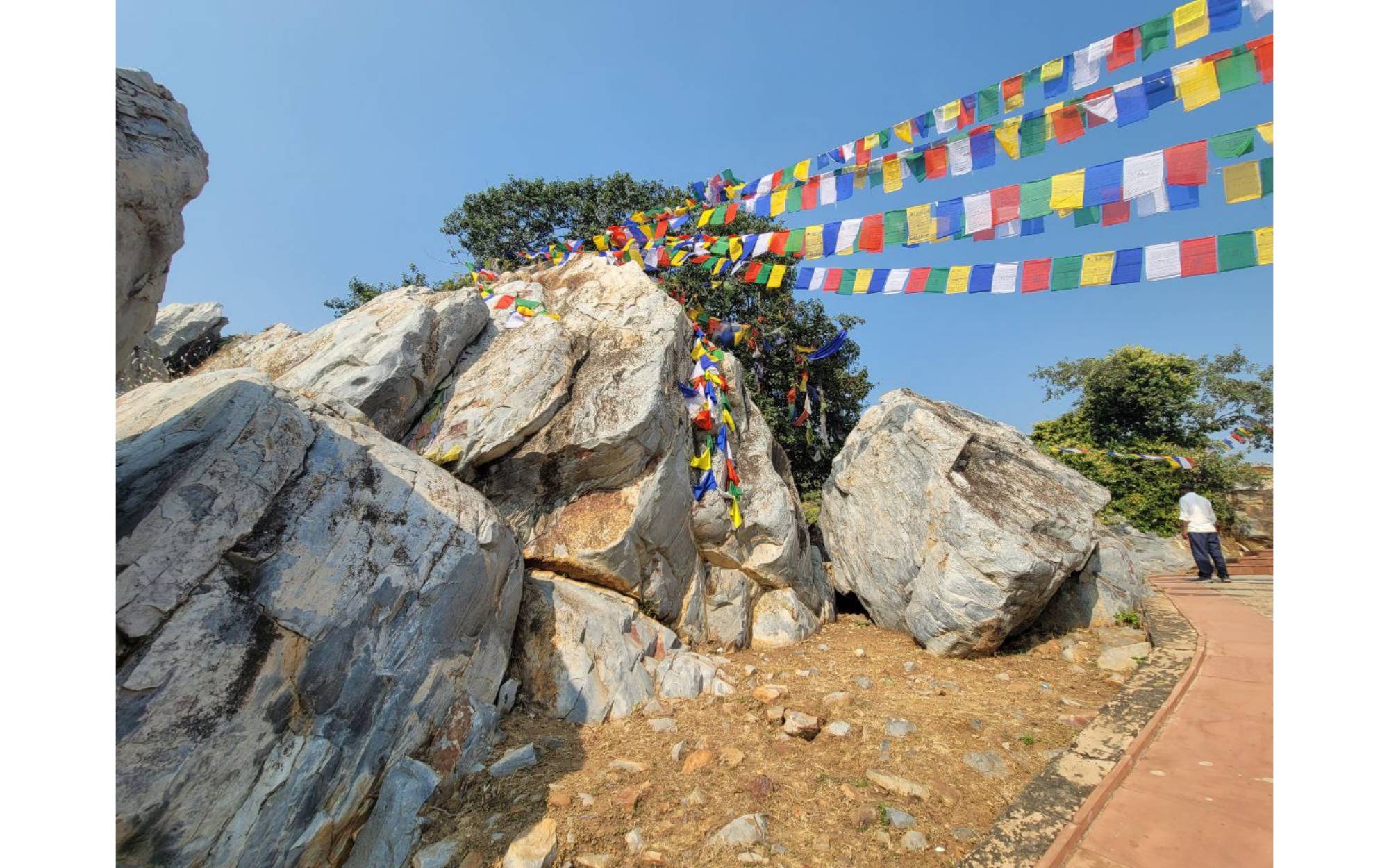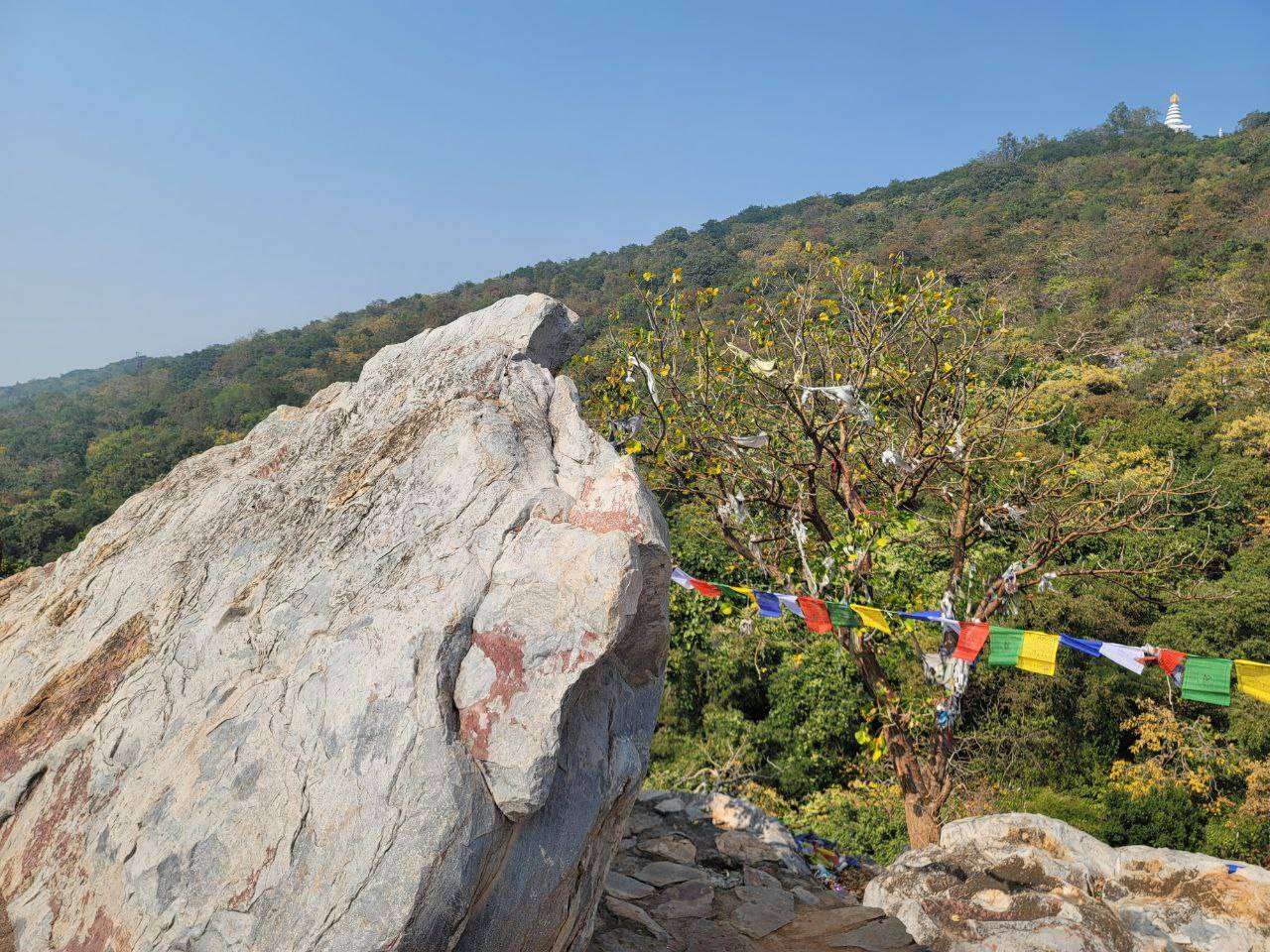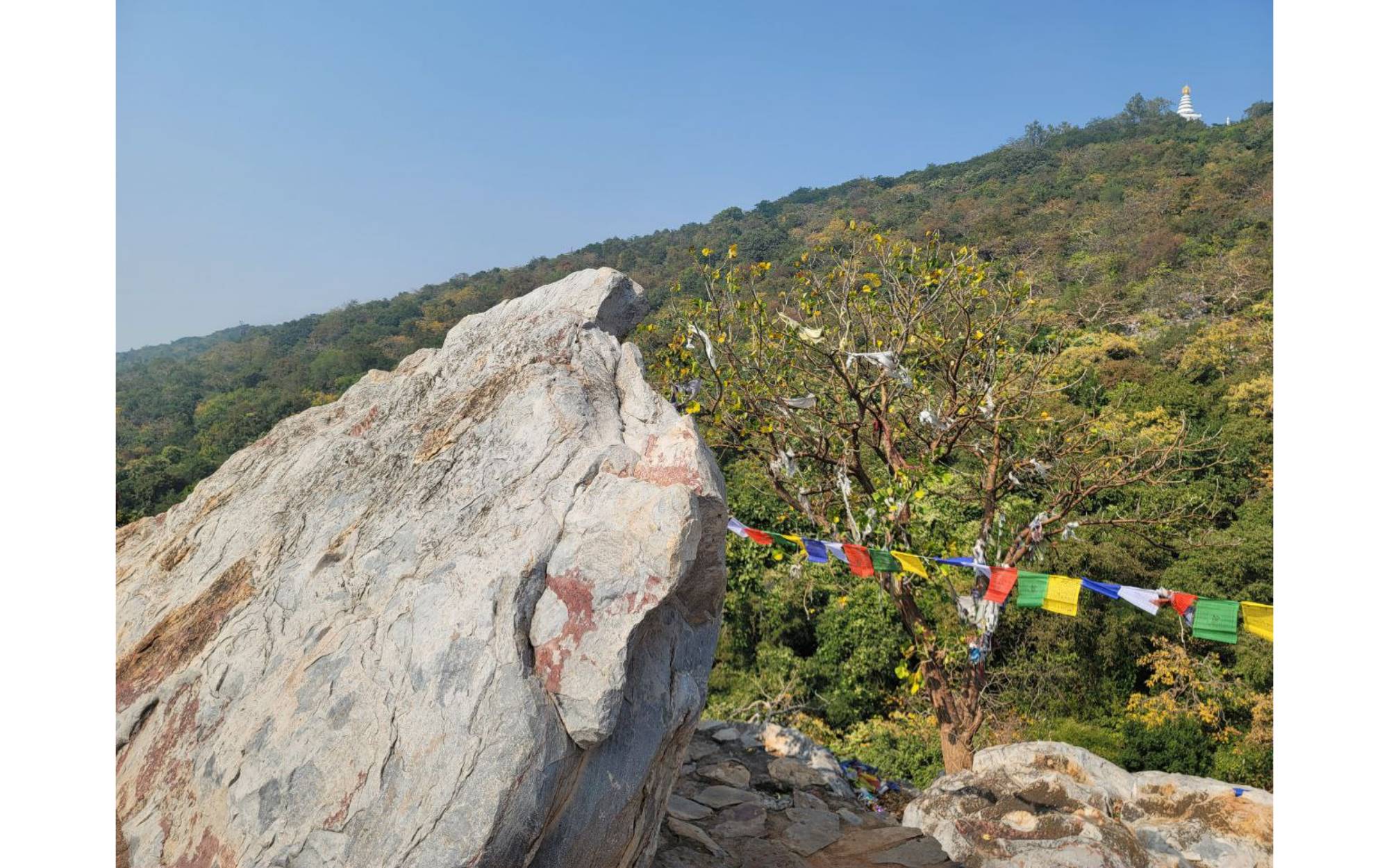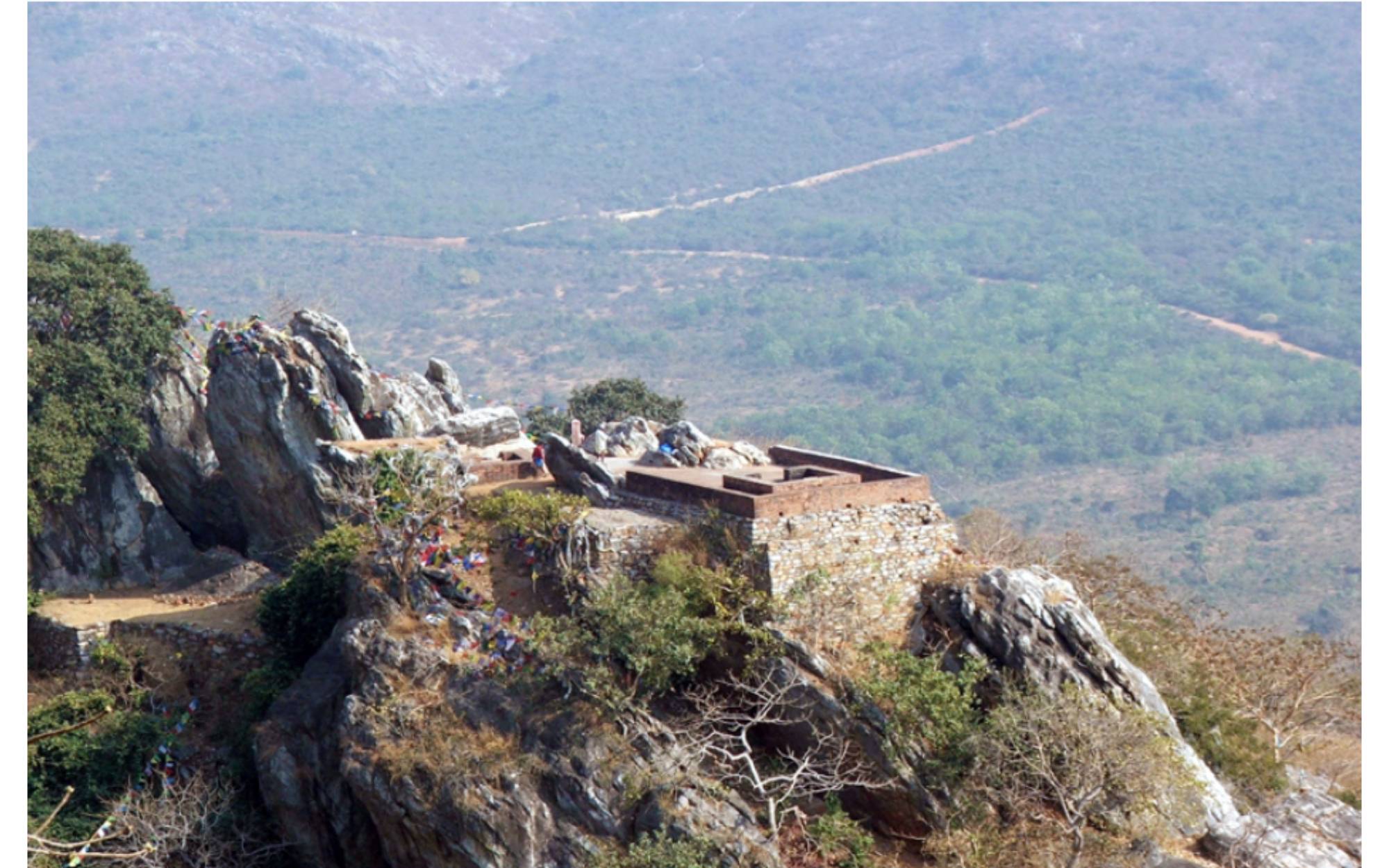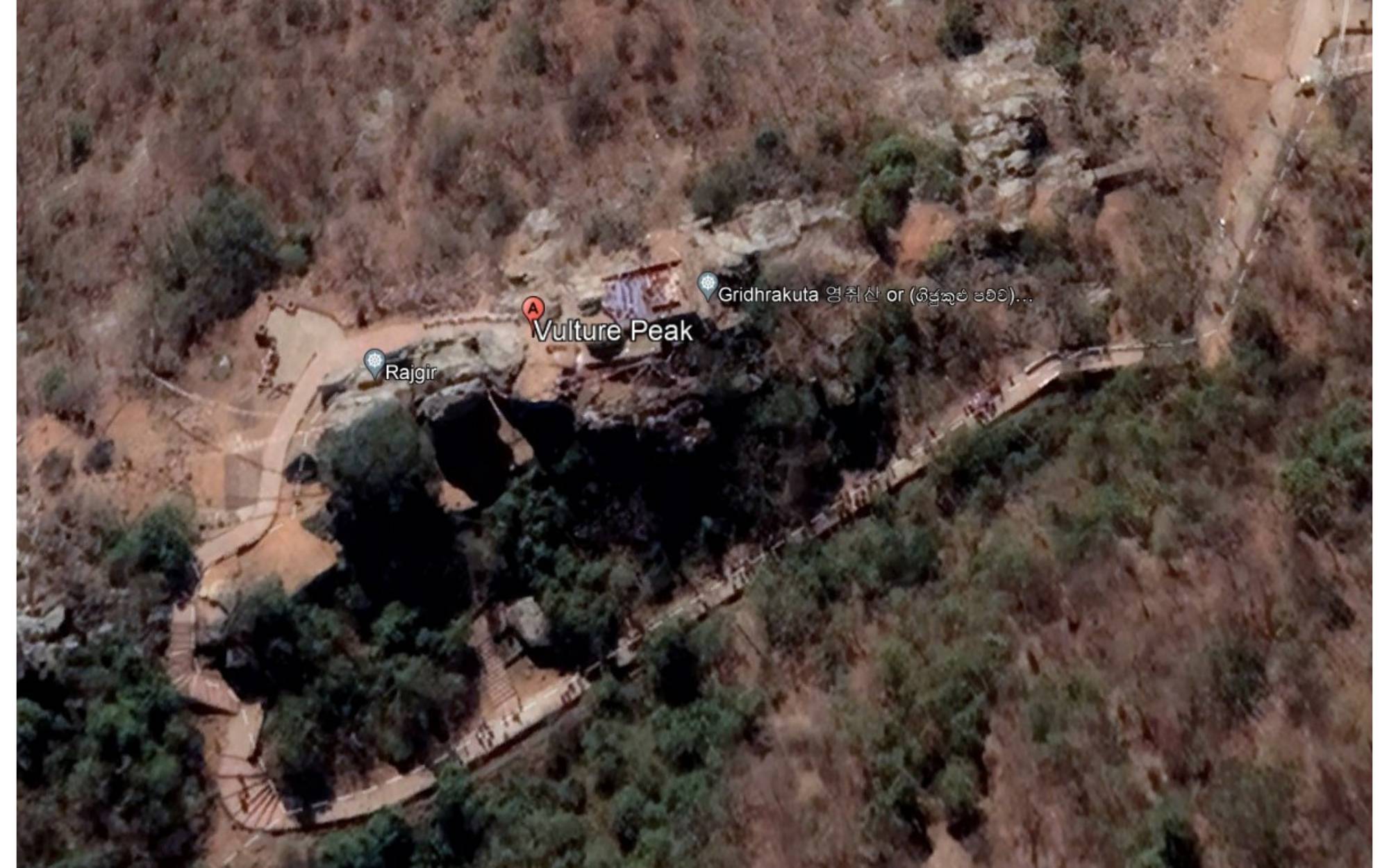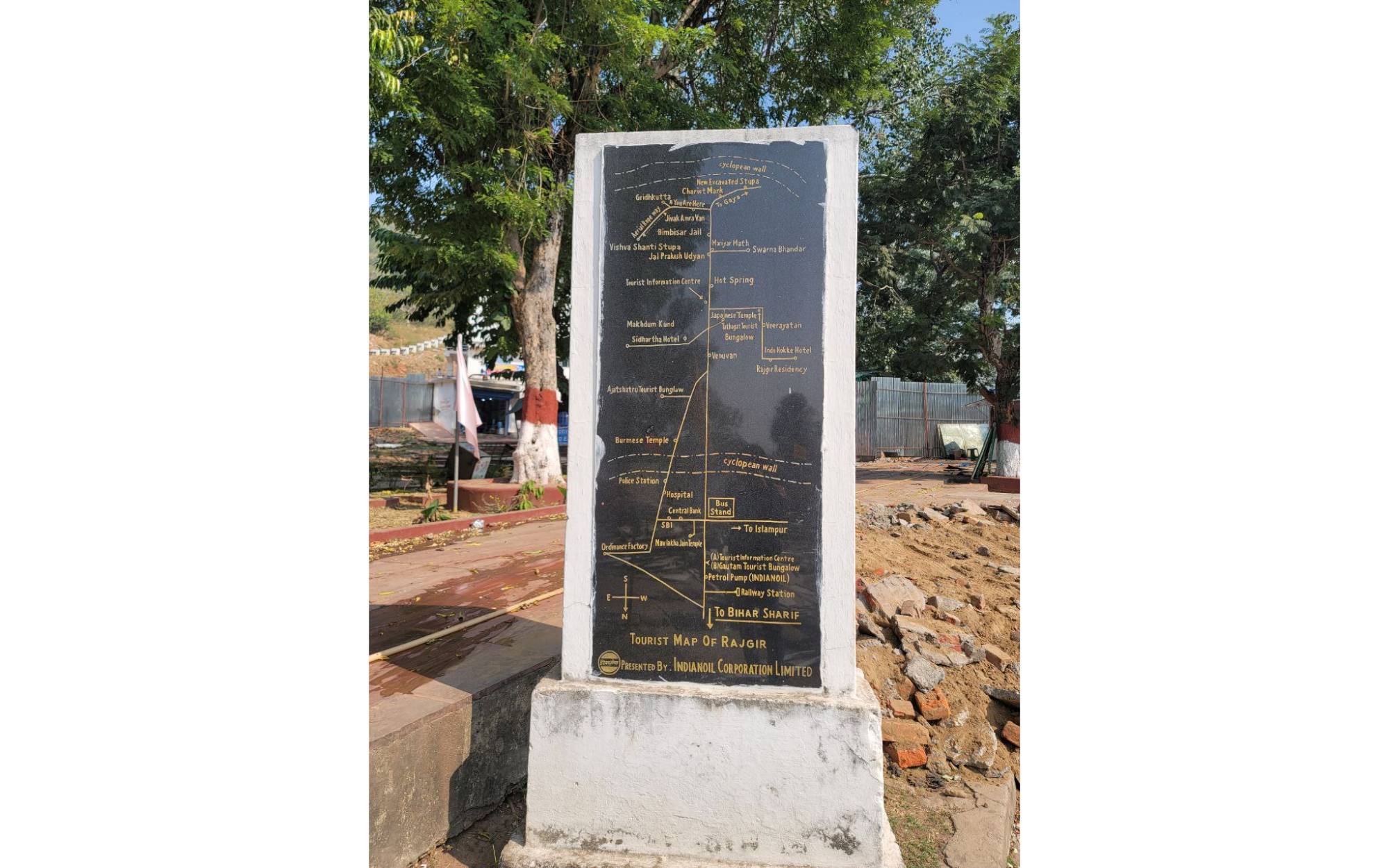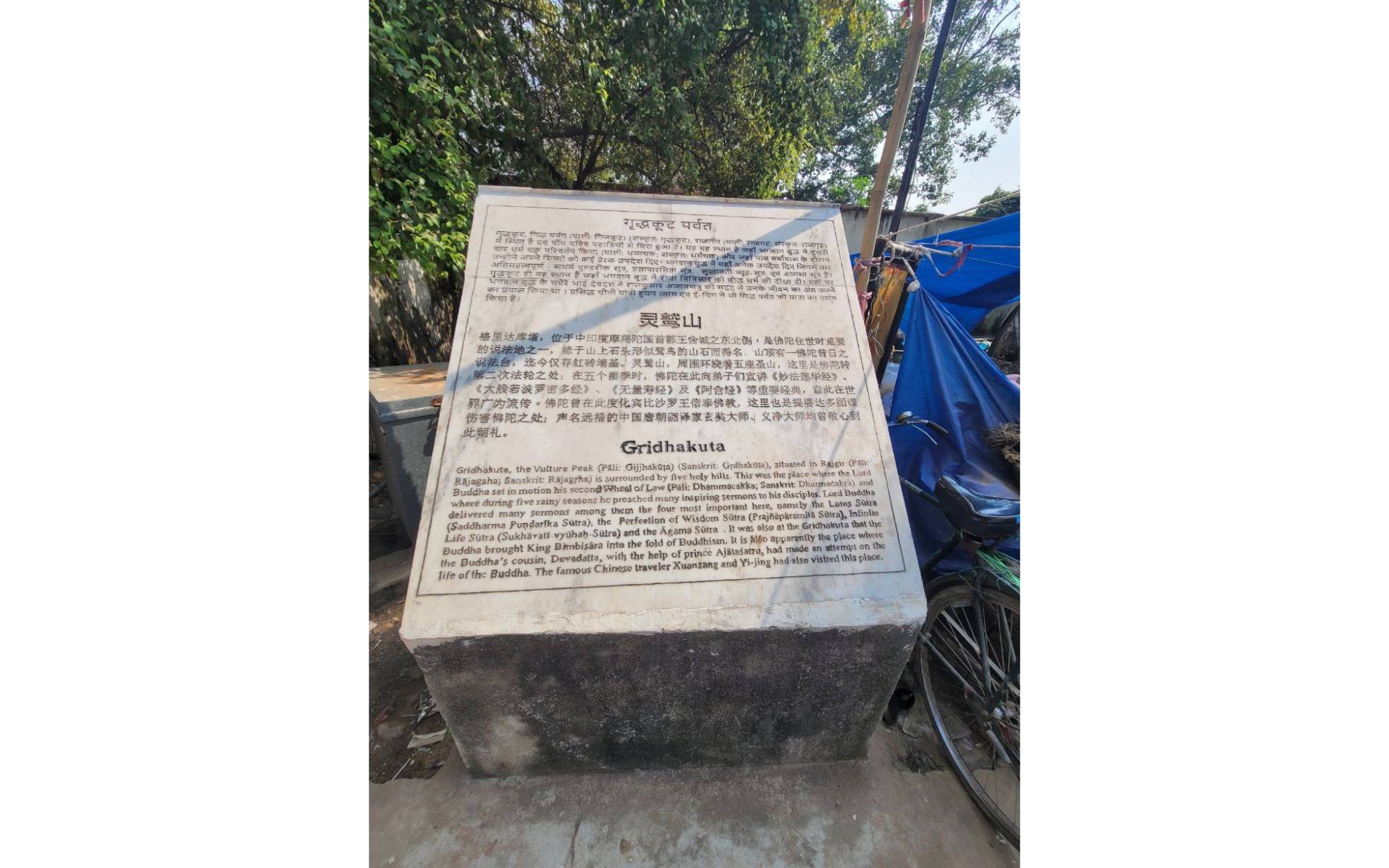Vulture Peak
Vulture Peak, Rajghir
Vulture Peak, known as Gijjhakuta in Pali and Gṛdhrakūṭa in Sanskrit, is one of the most revered sites in Buddhist tradition. Nestled in the Rajgir hills of Bihar, India, this mountain is renowned for its association with the Buddha, who spent a significant part of his life here. Vulture Peak is famed for being the site where the Buddha delivered some of his most important teachings, including the Lotus Sutra. Its rich historical and spiritual legacy continues to draw pilgrims and tourists from around the world. Historical Significance Vulture Peak holds a distinguished place in Buddhist history.
It is frequently mentioned in early Buddhist texts as a favored retreat of the Buddha. According to tradition, it was here that the Buddha delivered many key sermons, profoundly influencing the development of Mahayana Buddhism. One of the most notable events is the Buddha's delivery of the Lotus Sutra, which has become a cornerstone of Mahayana Buddhist doctrine. This site also saw the Buddha's interactions with his disciples, including notable figures like Ananda and Sariputta.
The mountain's name, derived from its vulture-like shape and the presence of actual vultures, adds to its mystique and significance. Vulture Peak stands as a testament to the enduring legacy of the Buddha and his teachings. Its historical, geographical, and cultural significance make it a unique and revered site in the Buddhist world. As a place where profound wisdom was shared and deep spiritual practices were cultivated, Vulture Peak continues to inspire and attract those seeking enlightenment and a deeper understanding of Buddhist philosophy. Its timeless relevance ensures that it will remain a cherished landmark for generations to come.
History
Vulture Peak, known as Gṛdhrakūṭa in Sanskrit, is a significant site in Buddhist history and tradition. This peak is located in the Rajgir hills in Bihar, India, and it holds a special place in the hearts of Buddhists for several reasons:
1. Buddhist Teachings and Sutras
Vulture Peak is renowned as the site where several important Buddhist teachings and sutras were delivered by the Buddha. Among these, the Lotus Sutra (Saddharma Puṇḍarīka Sūtra) and the Heart Sutra (Prajñāpāramitā Hṛdaya) are particularly significant. These texts are central to Mahayana Buddhism and are revered for their profound philosophical insights.
2. Historical Context
During the time of the Buddha (approximately 5th century BCE), Rajgir was the capital of the kingdom of Magadha. The city was a major center for various religious and philosophical traditions. The proximity of Vulture Peak to this bustling city made it an accessible yet secluded location for the Buddha to teach his followers.
3. Symbolism
The name "Vulture Peak" comes from the shape of the mountain, which resembles a vulture with its wings spread out. This symbolism is also reflected in Buddhist iconography, where the vulture represents wisdom and the ability to see things from a higher perspective.
4. Pilgrimage Site
Vulture Peak has been a site of pilgrimage for Buddhists for centuries. It is visited by monks, scholars, and lay practitioners who come to meditate, reflect on the teachings of the Buddha, and experience the historical and spiritual ambiance of the place.
5. Archaeological and Cultural Significance
Archaeological excavations around Vulture Peak have uncovered various relics and ruins that provide insights into the early Buddhist monastic life and practices. These findings include stupas, monasteries, and inscriptions that date back to the time of the Buddha and his immediate followers.
6. Modern Recognition
Today, Vulture Peak continues to be an important site for Buddhists worldwide. It is part of the Buddhist Circuit in India, attracting tourists and pilgrims from around the globe who seek to connect with the ancient roots of their faith.
Key Events Associated with Vulture Peak
First Buddhist Council: After the Buddha's passing, the First Buddhist Council is believed to have taken place in Rajgir, close to Vulture Peak. This council was crucial for compiling the Buddha's teachings into what became the Pali Canon.
Teachings of the Heart Sutra: The Buddha is said to have expounded the Heart Sutra at Vulture Peak, imparting deep wisdom on the nature of emptiness and the ultimate reality.
Conclusion
Vulture Peak stands as a testament to the rich history and enduring legacy of Buddhism. Its association with key Buddhist texts and events makes it a symbol of spiritual wisdom and a revered pilgrimage site. Whether approached through historical, cultural, or spiritual lenses, Vulture Peak continues to inspire and draw people seeking enlightenment and understanding of the Buddha's teachings.
Architecture
Architectural Features
Natural Formations: The peak itself is a natural rock formation, and much of its significance comes from these natural features rather than man-made structures.
Meditation Sites: Various spots on the peak are marked as meditation sites where the Buddha is believed to have spent time. These include natural caves and rock overhangs providing shelter.
Stupas and Shrines:
- Stupa at the Summit: There is a stupa at the top of Vulture Peak, which serves as a focal point for pilgrims. It is a simple structure, often adorned with prayer flags and offerings.
- Shrines: Small shrines and altars are scattered around the peak, often marked with statues of the Buddha and other figures from Buddhist lore.
Pathways and Steps: To facilitate the ascent, there are stone steps and pathways leading up to the main points of interest. These paths are relatively simple, emphasizing the natural landscape.
How to Go
Vulture Peak, also known as Griddhakuta, is a significant Buddhist pilgrimage site located near Nalanda, in Rajgir, Bihar. This historic site is where Lord Buddha is said to have delivered many important sermons. Here’s a detailed guide on how to reach Vulture Peak:
Nearest Major Cities and Transportation Hubs
- Patna: The capital city of Bihar, approximately 100 kilometers from Rajgir, serves as a primary gateway for travelers heading to Vulture Peak.
- Gaya: Another significant city, about 78 kilometers from Rajgir, known for its religious importance and also a convenient transit point.
By Air
- Jay Prakash Narayan International Airport, Patna: The closest major airport to Rajgir, with good connectivity to major Indian cities such as Delhi, Mumbai, Kolkata, and Bangalore. From the airport, you can hire a taxi or take a bus to Rajgir.
- Gaya Airport: Another option with limited connectivity but offers direct flights from cities like Kolkata and Varanasi. From Gaya, you can reach Rajgir by road.
By Train
- Rajgir Railway Station: Rajgir has its own railway station, which is well-connected with Patna and other nearby regions. From the station, you can take local transport to Vulture Peak.
- Nalanda Railway Station: Located around 12 kilometers from Rajgir, this station can be an alternative if you can't get a direct train to Rajgir. From Nalanda, you can take a taxi or local transport to Rajgir.
- Patna Junction: A major railway hub with extensive connectivity across India. From Patna, you can hire a taxi or take a bus to Rajgir.
By Road
- From Patna: Taxis and buses are readily available, with the journey taking about 2-3 hours. Regular bus services are available from Patna’s main bus terminal.
- From Gaya: The road journey takes about 2 hours, with taxis and buses readily available.
- Self-Drive: Renting a car is an option if you prefer driving. The roads are generally in good condition and well-signposted.
Local Transportation
- Auto-Rickshaws: A common mode of transport for short distances within Rajgir. They are affordable and easily available.
- Taxis: For more comfortable and convenient travel, taxis can be hired for the day or for specific trips.
- Bicycles and E-Rickshaws: Environmentally friendly options that are also available for exploring the local area.
Reaching Vulture Peak
Once you reach Rajgir, getting to Vulture Peak involves a short hike. Here are the steps:
- Local Transport to the Base: From Rajgir, take an auto-rickshaw, taxi, or e-rickshaw to the base of Vulture Peak.
- Cable Car: You can opt for a cable car ride that takes you halfway up the peak, offering scenic views of the surroundings.
- Hiking: If you prefer walking, you can hike up the trail that leads to the summit. The hike is relatively easy and well-marked.
Travel Tips
- Best Time to Visit: The ideal time to visit Vulture Peak is between October and March when the weather is pleasant.
Where to stay
The Rajgir Residency:
- Description: A well-known hotel offering modern amenities and comfortable rooms. It is conveniently located near major attractions, including Vulture Peak.
- Facilities: Swimming pool, restaurant, free Wi-Fi, and conference facilities.
- Ideal For: Families and business travelers.
Gargee Gautam Vihar Resort:
- Description: A luxurious resort providing a range of recreational activities and premium services, located close to Vulture Peak.
- Facilities: Spa, swimming pool, multi-cuisine restaurant, and fitness center.
- Ideal For: Couples and travelers looking for a luxurious experience.
Hotel Siddhartha International:
- Description: A mid-range hotel providing good value for money. It offers clean and well-maintained rooms and is situated conveniently for exploring Rajgir’s attractions.
- Facilities: Free Wi-Fi, restaurant, and tour assistance.
- Ideal For: Budget travelers and backpackers.
Tathagat Hotel:
- Description: A budget-friendly hotel with basic amenities, ideal for those seeking economical stays.
- Facilities: Restaurant, room service, and parking.
- Ideal For: Solo travelers and backpackers.

